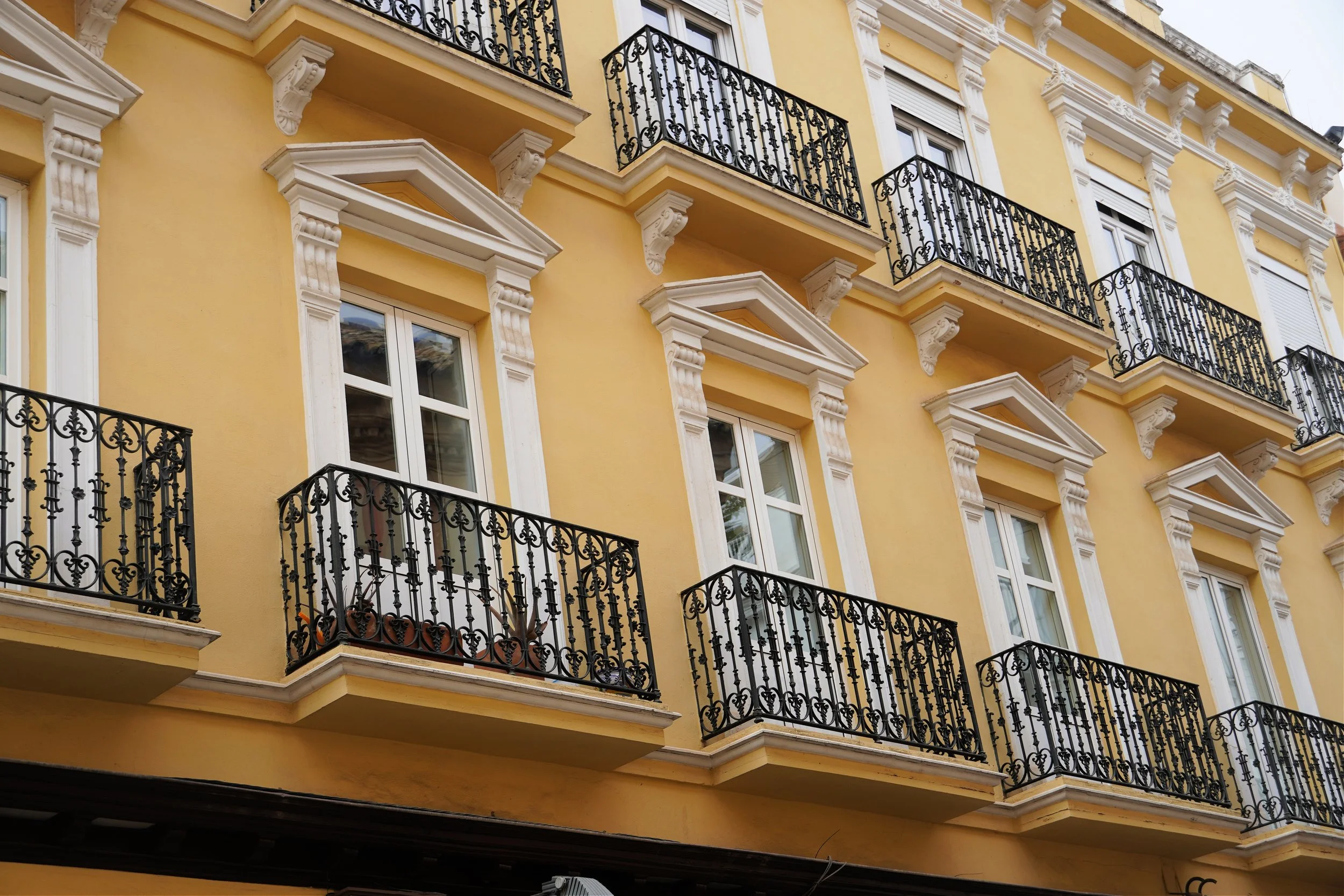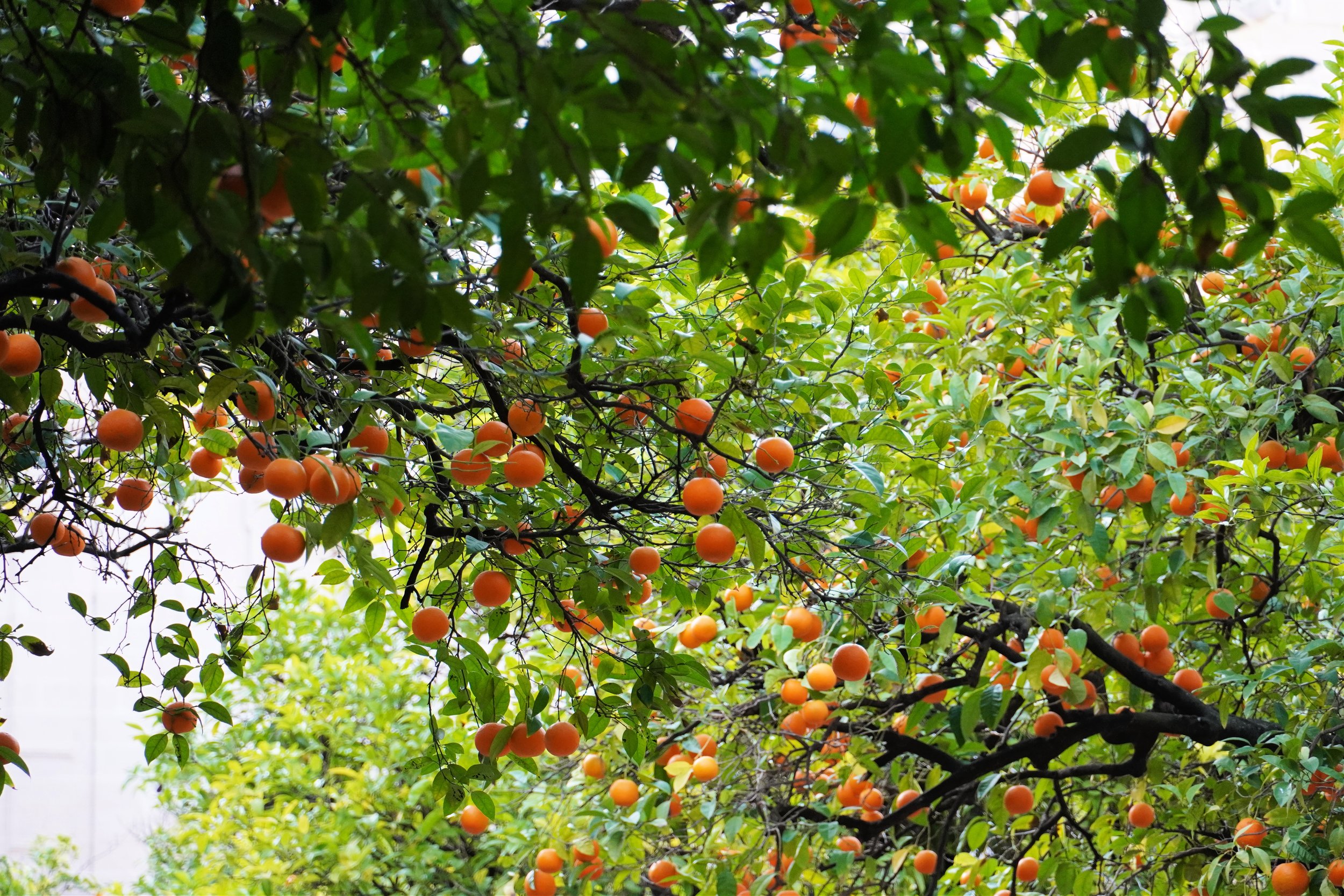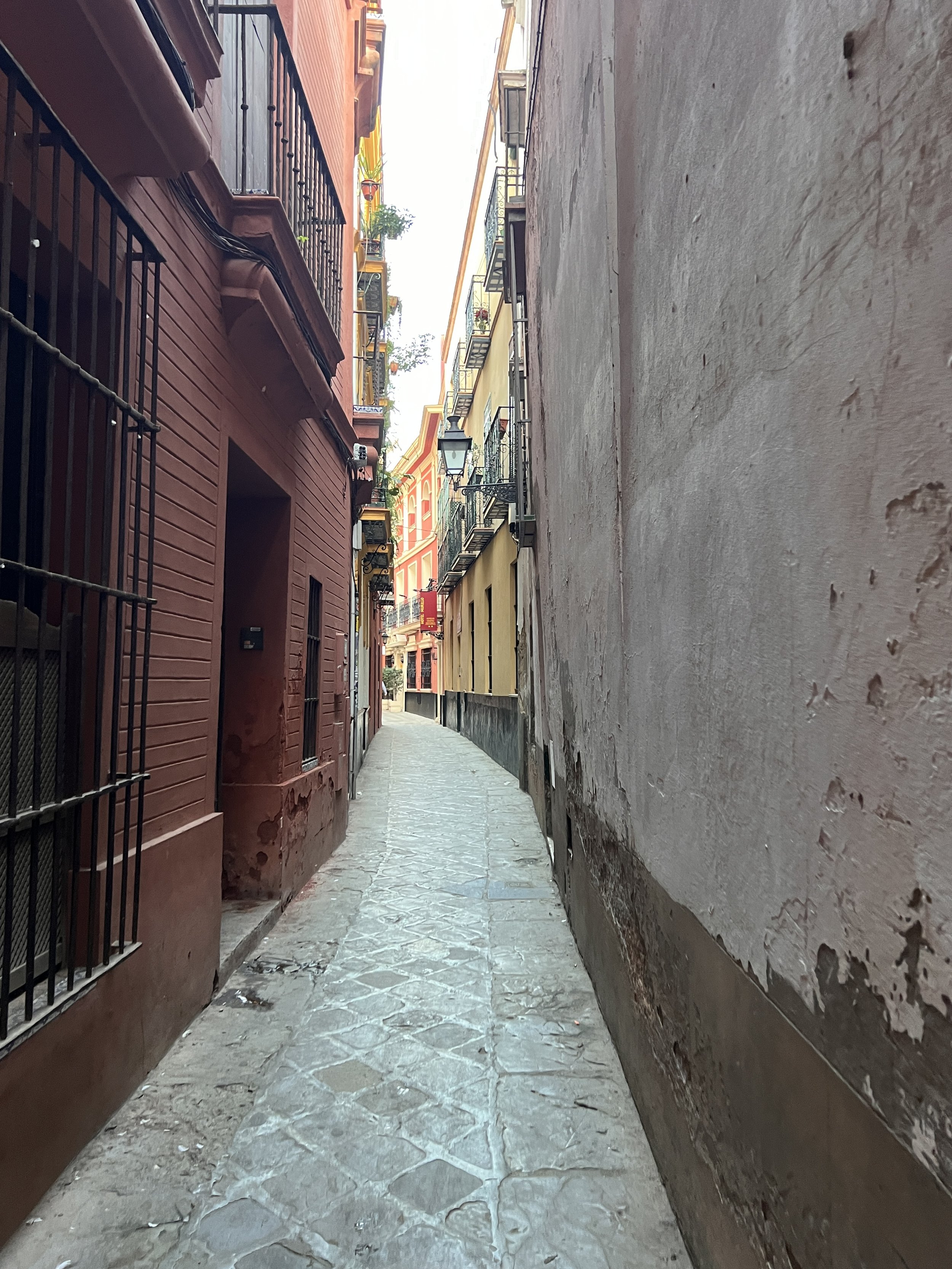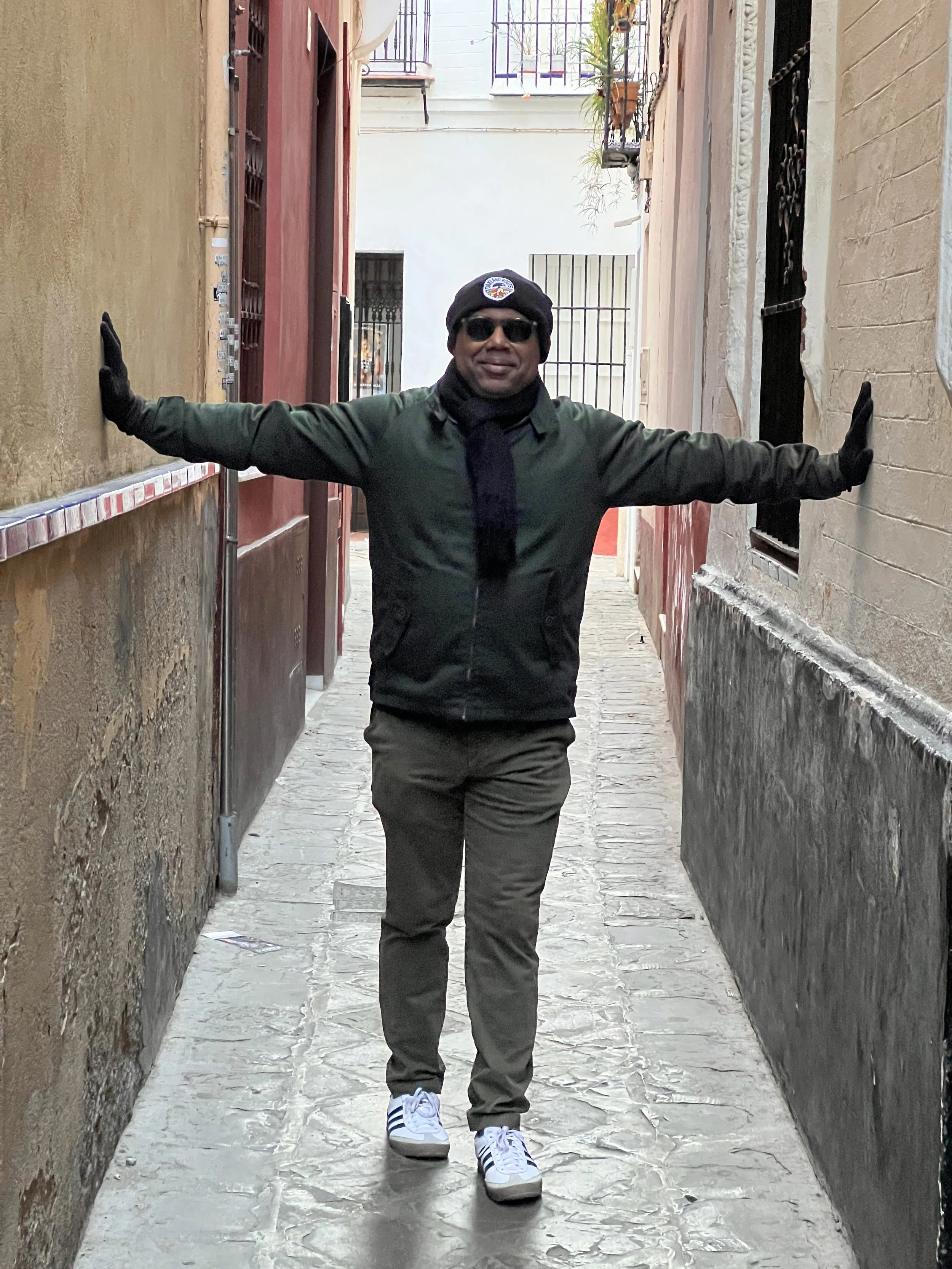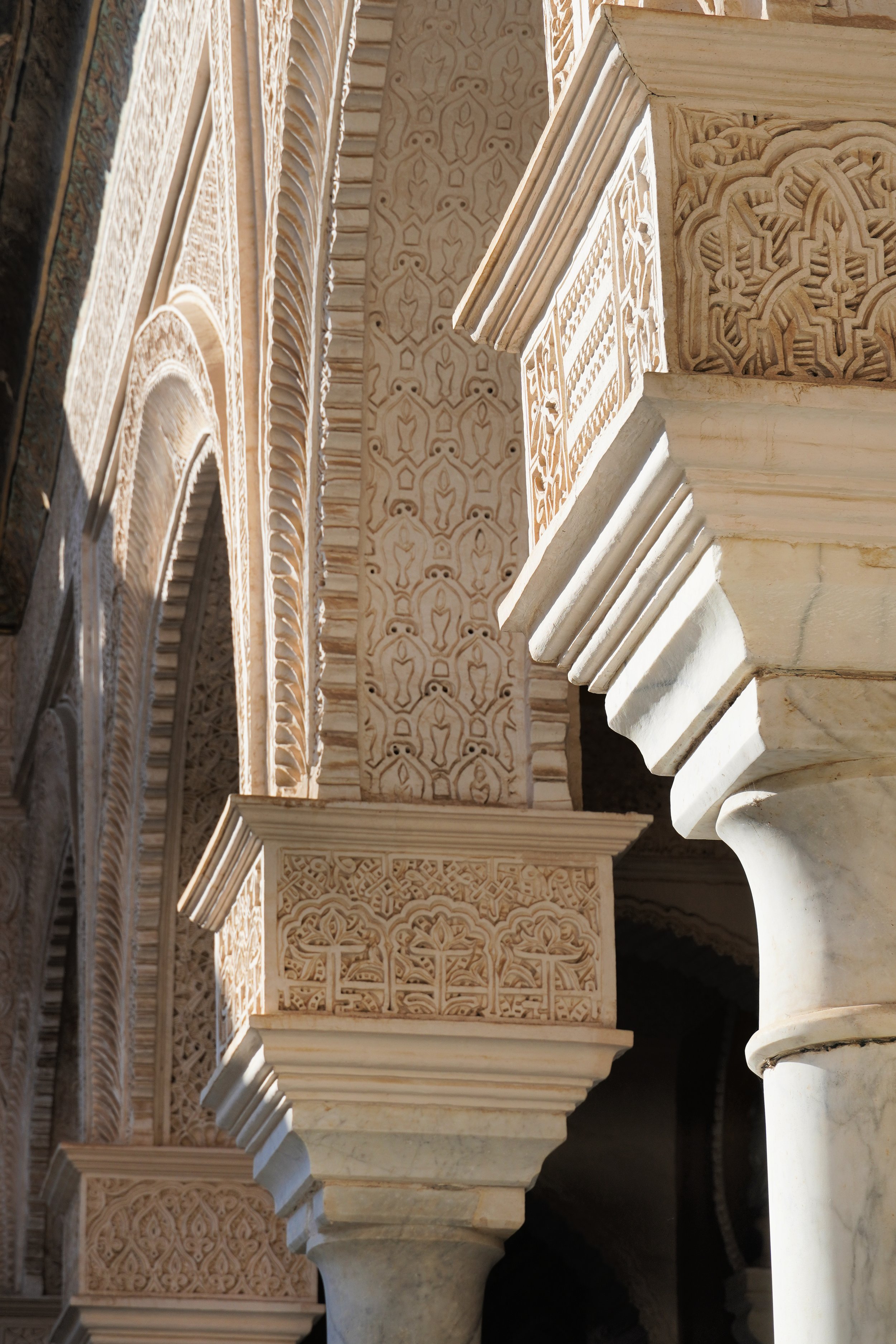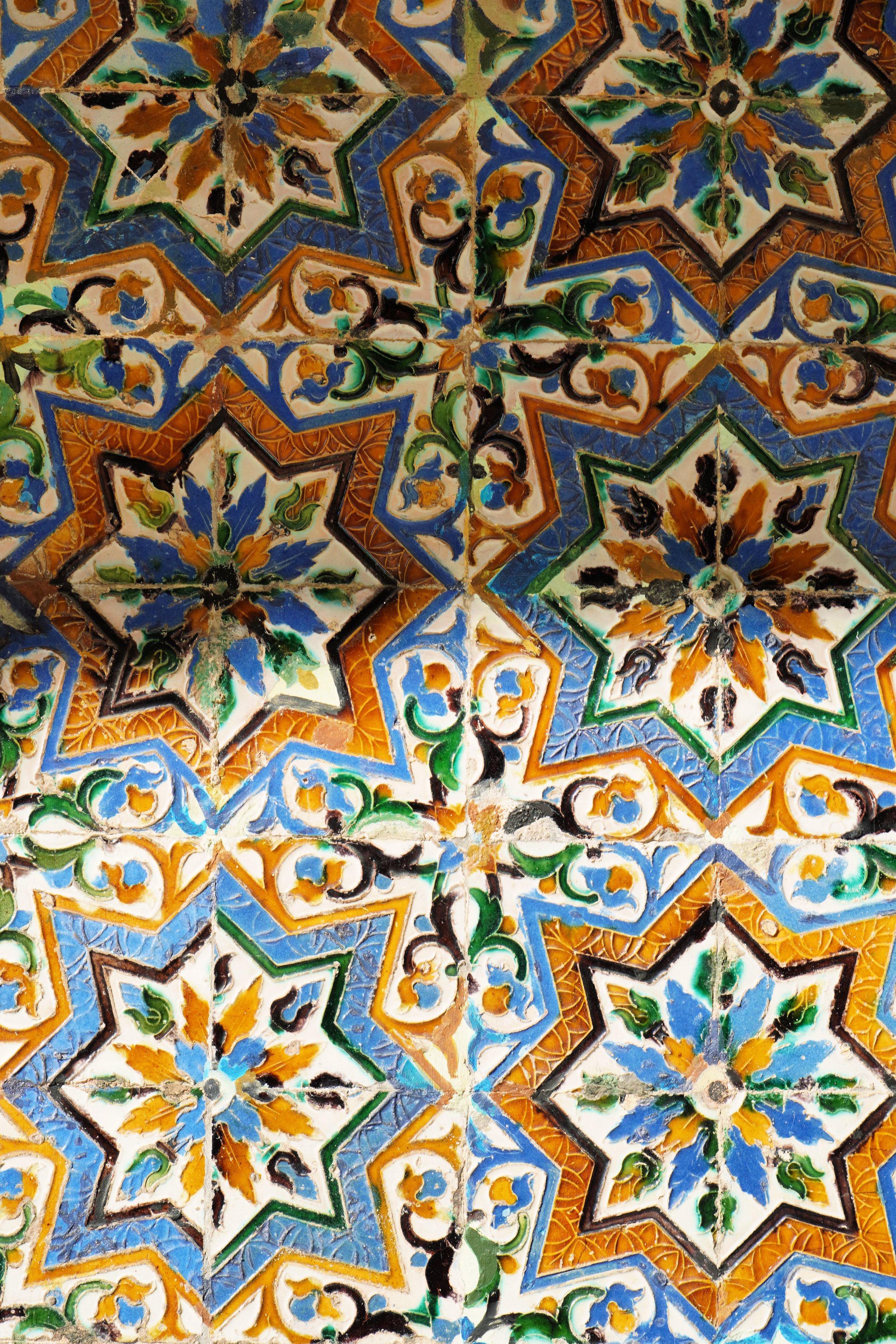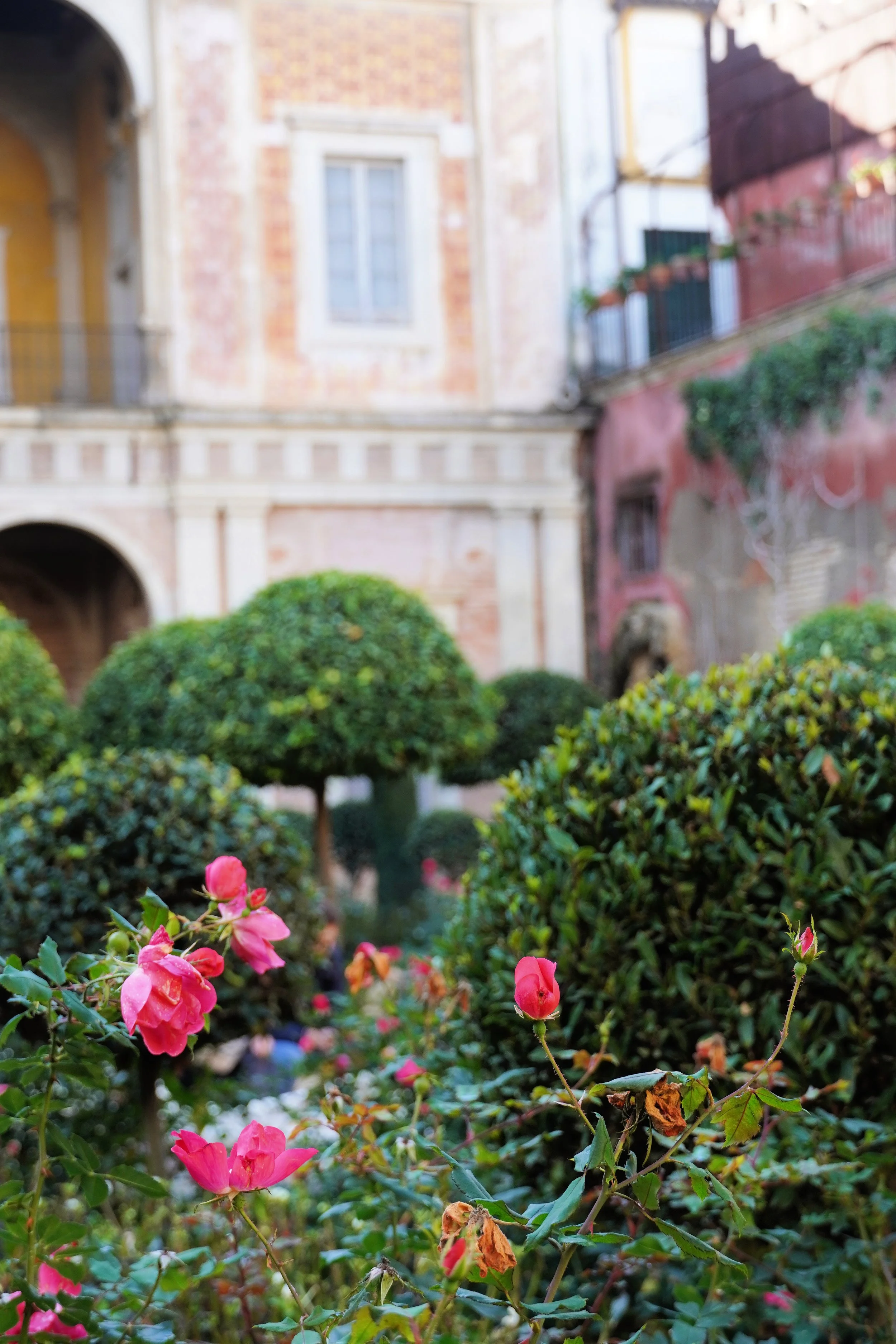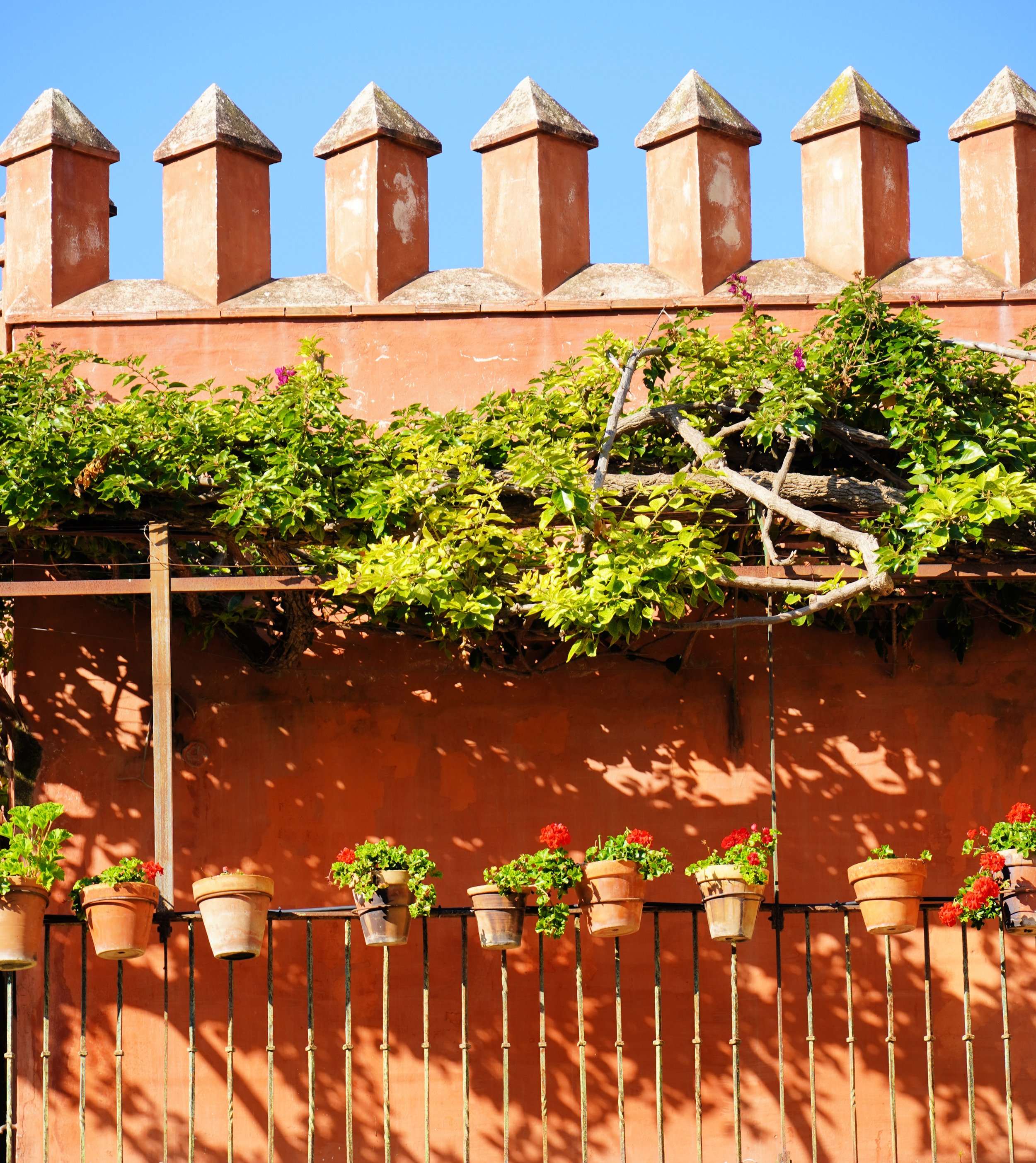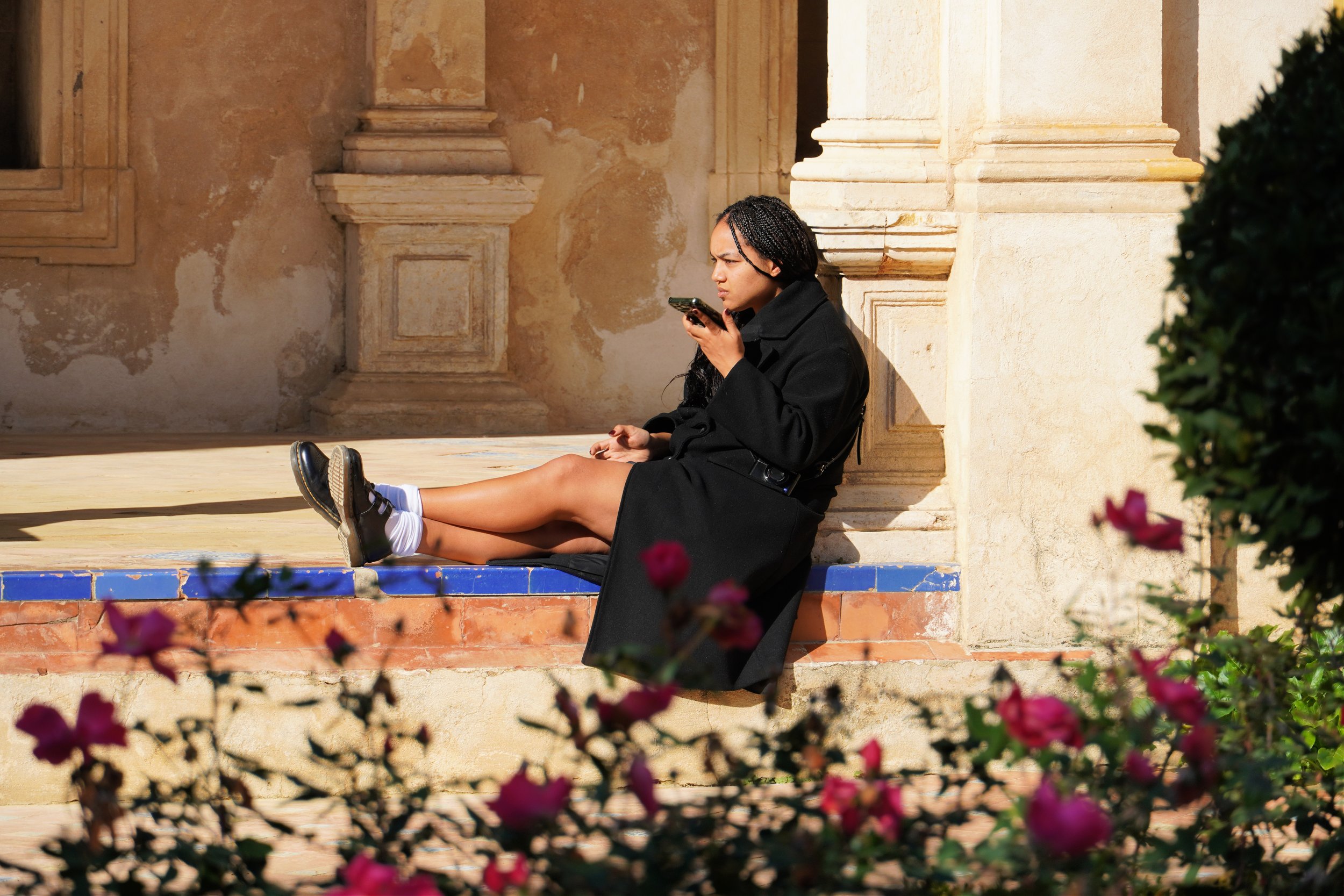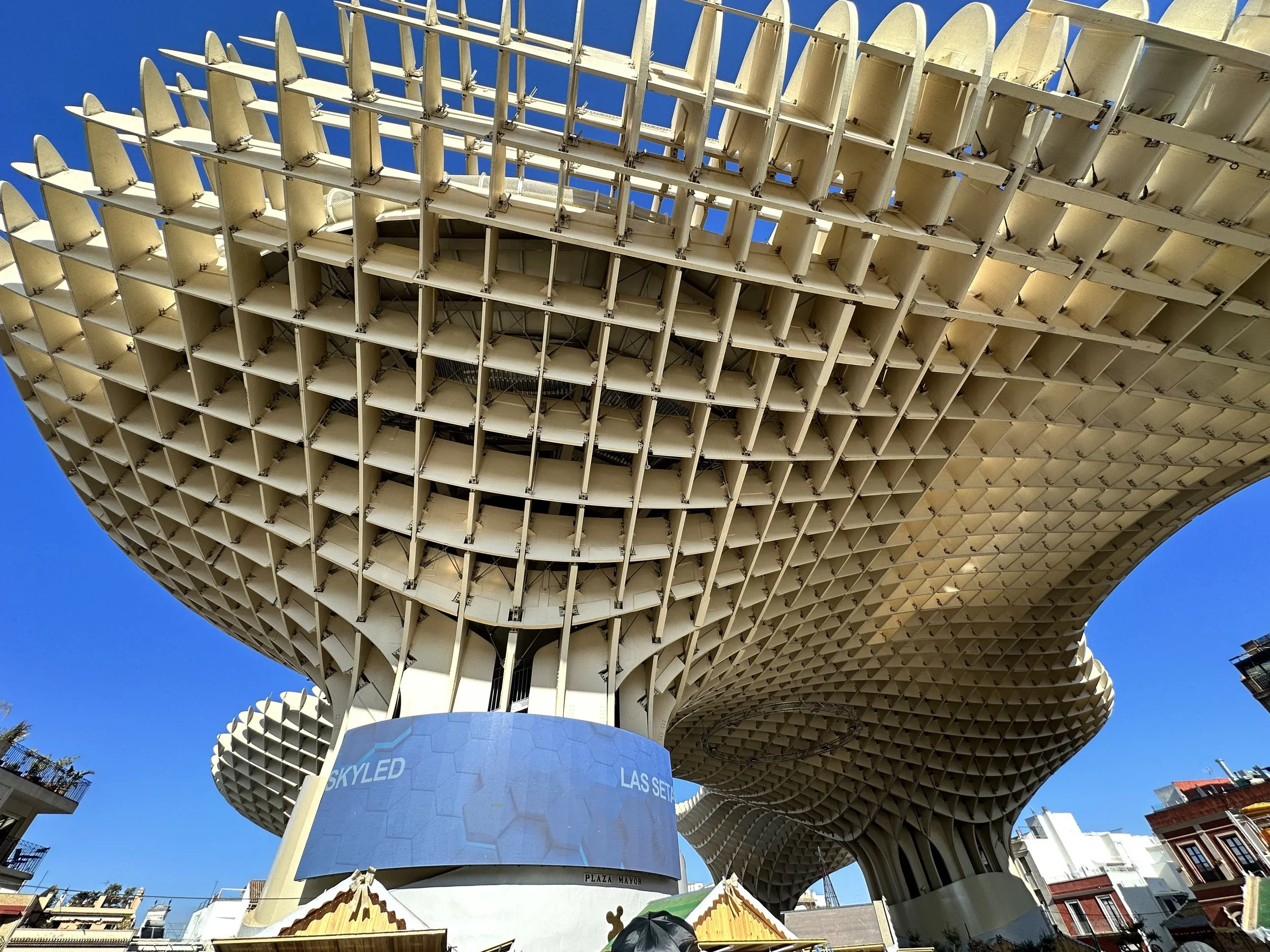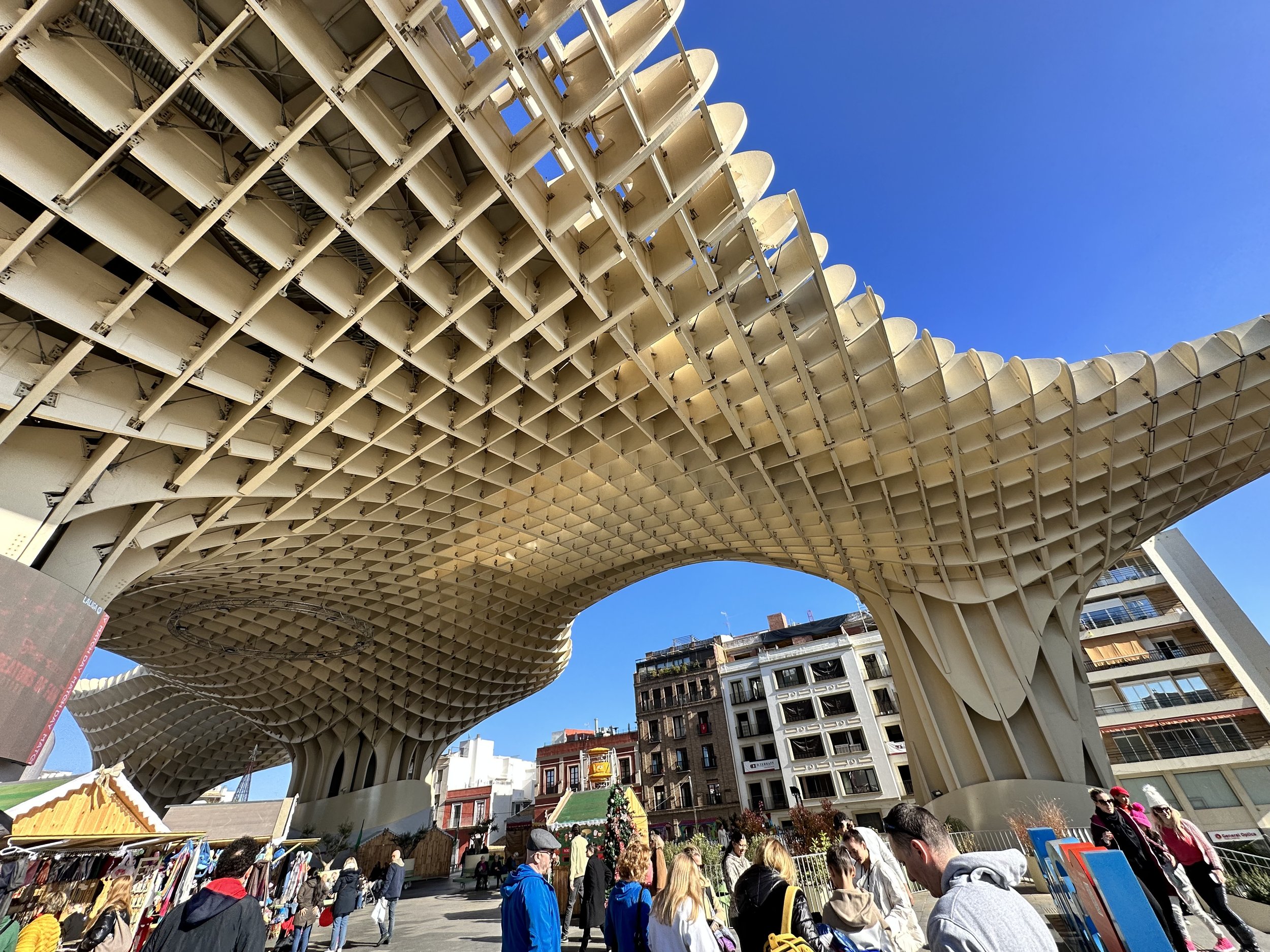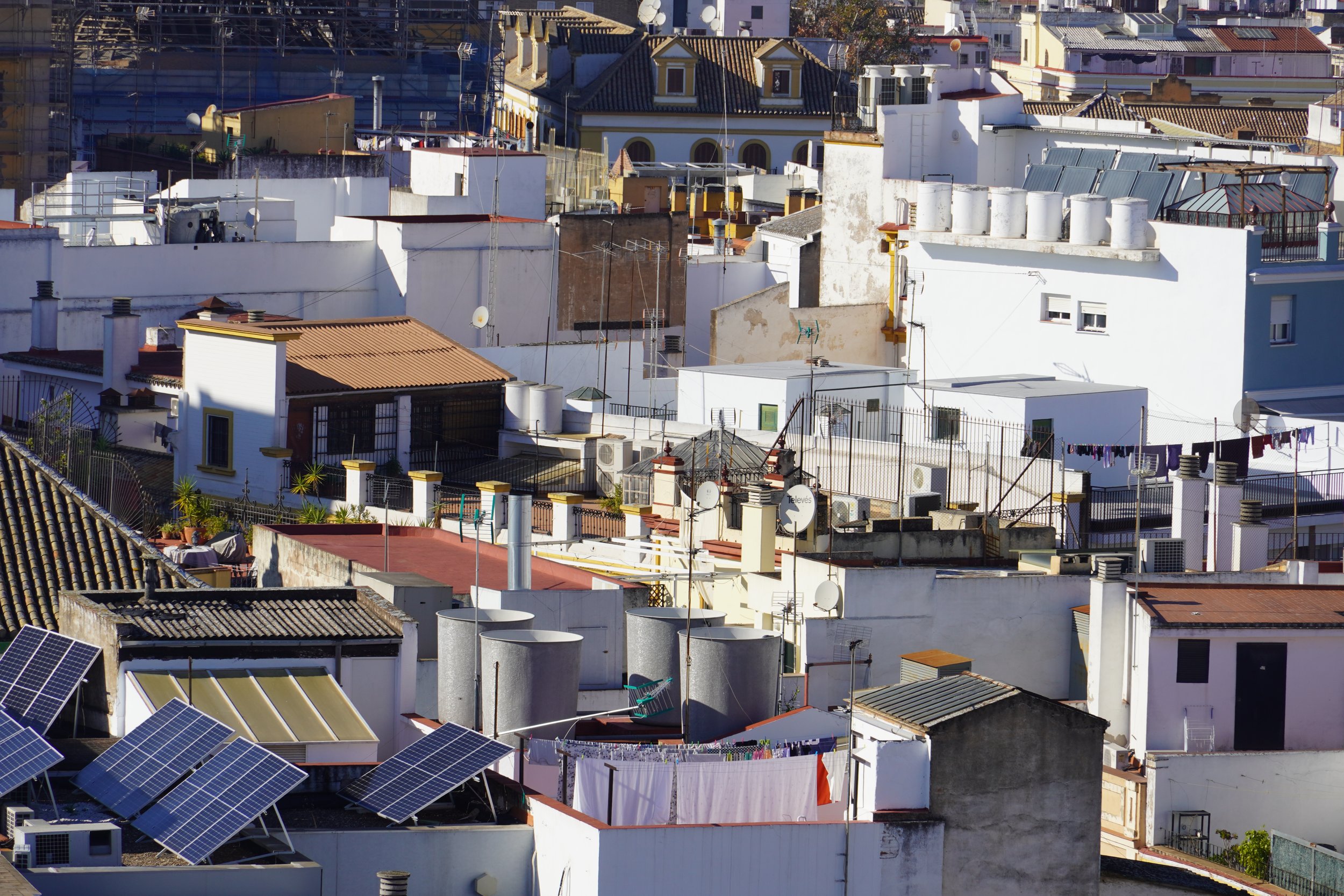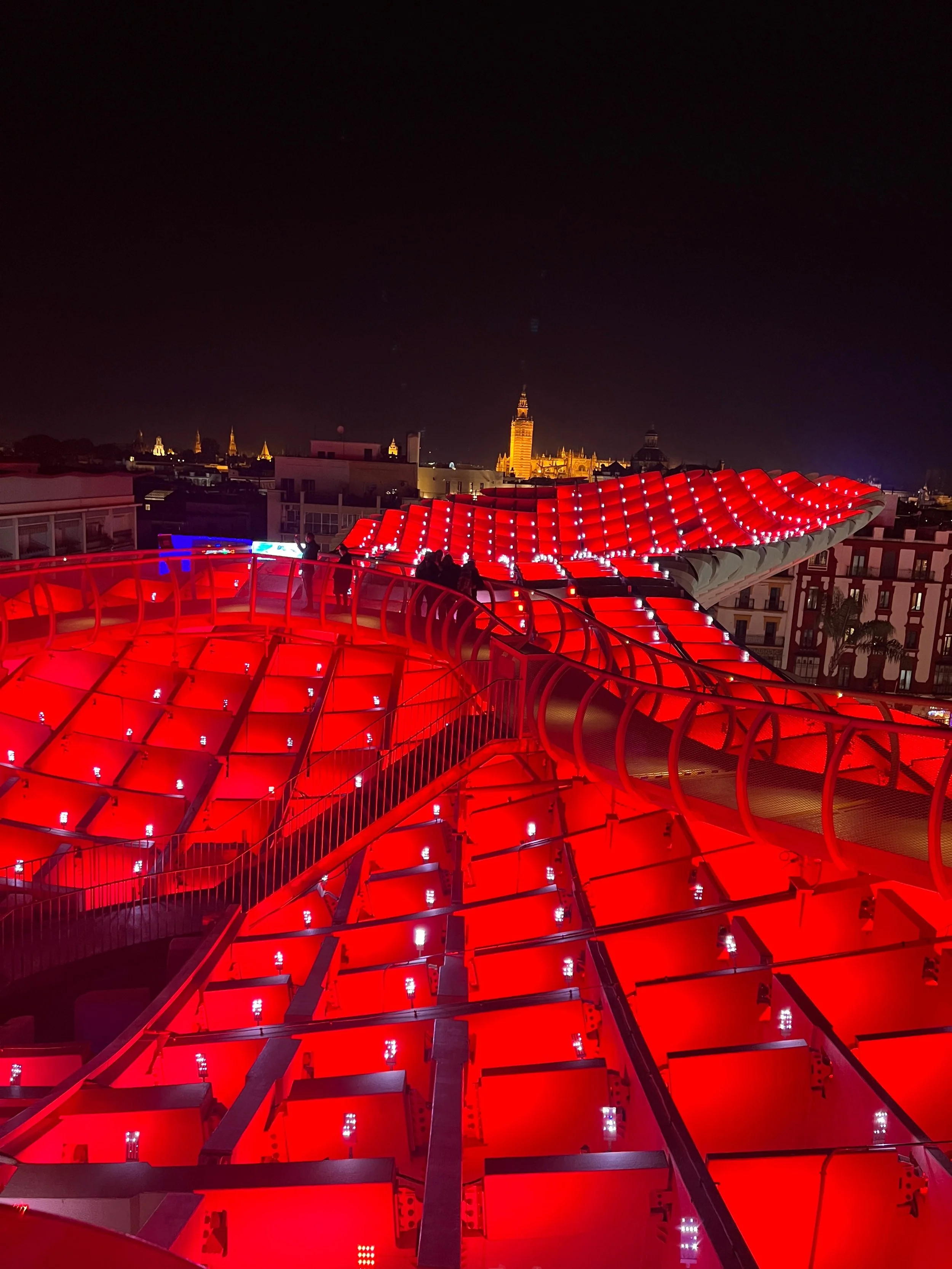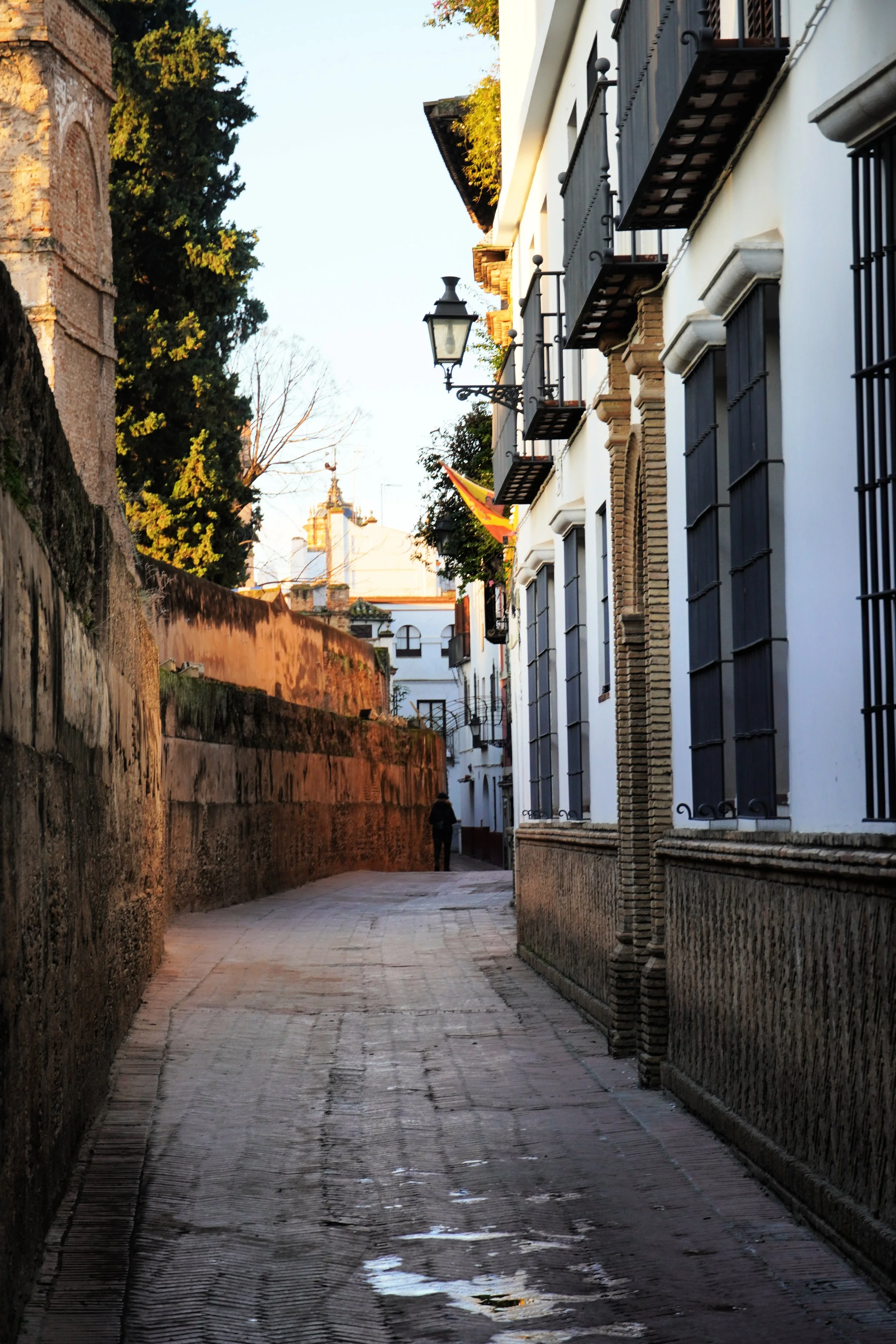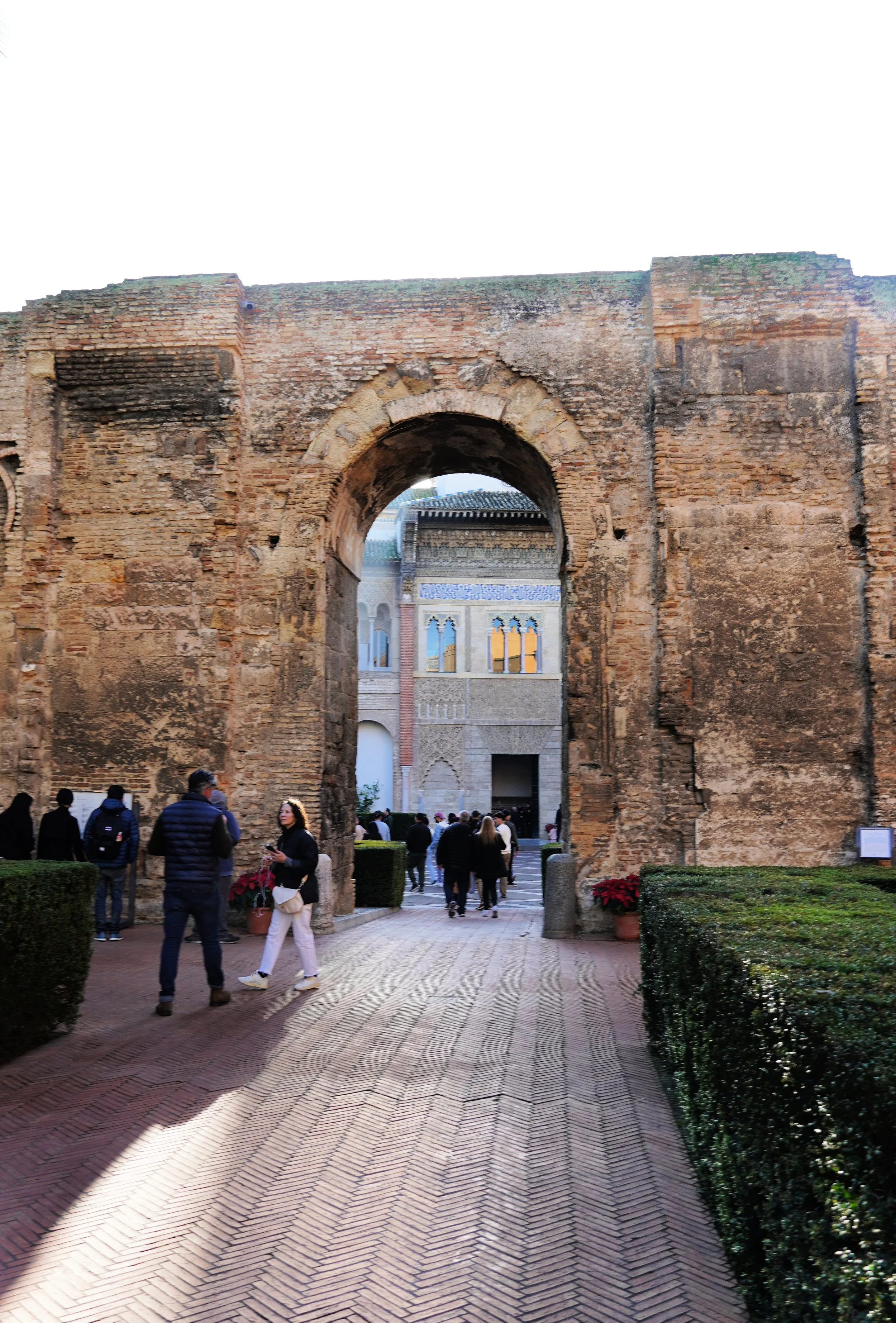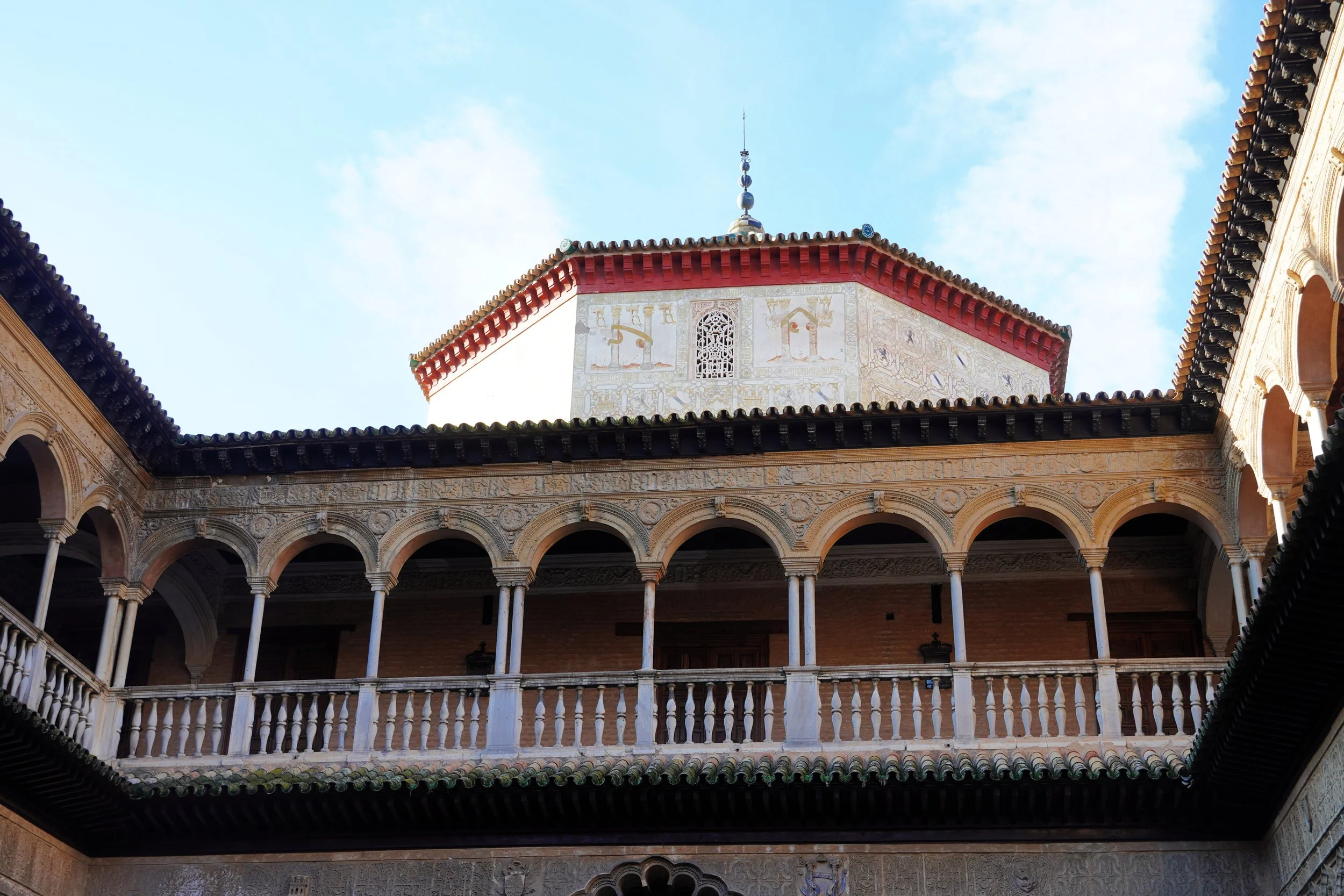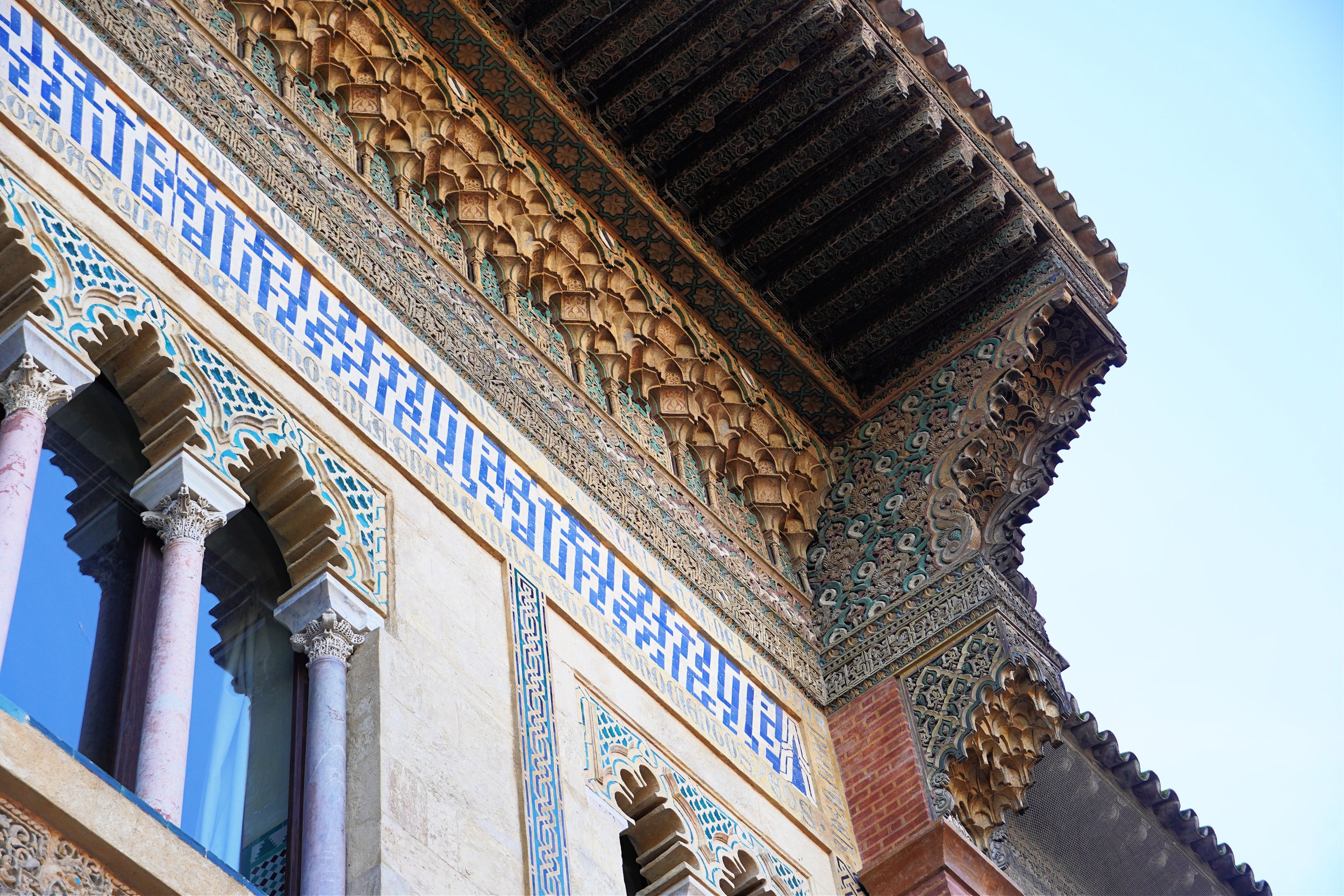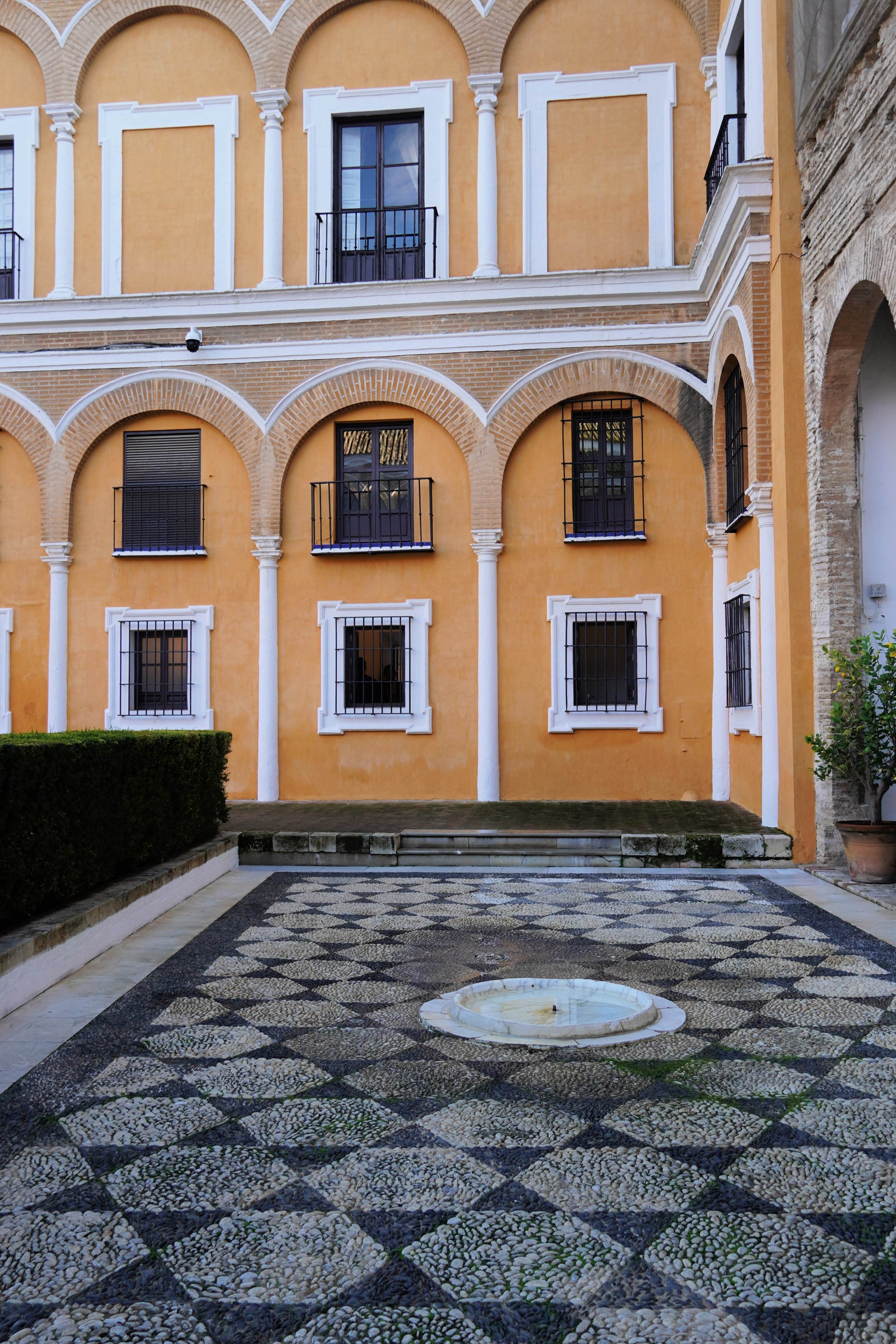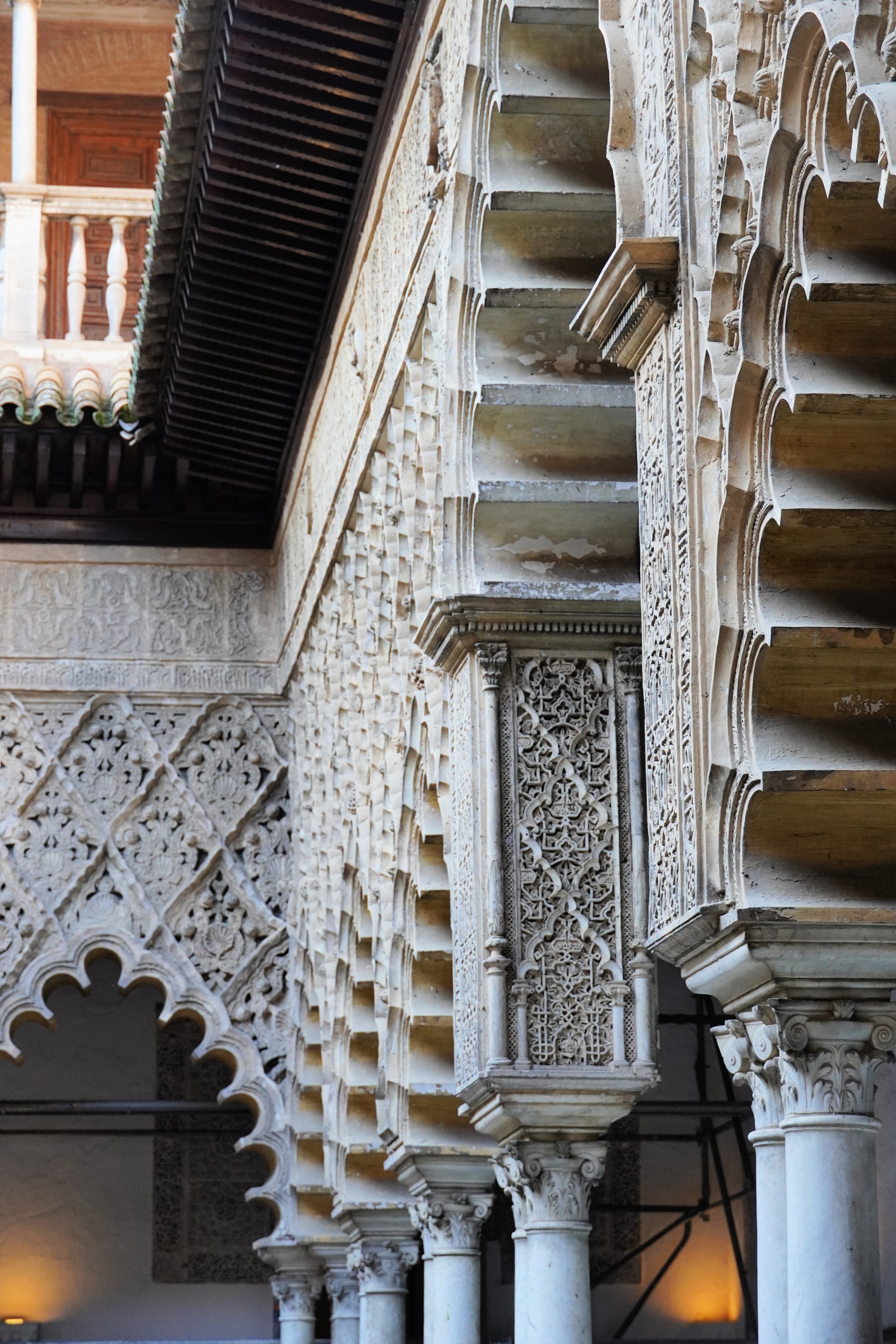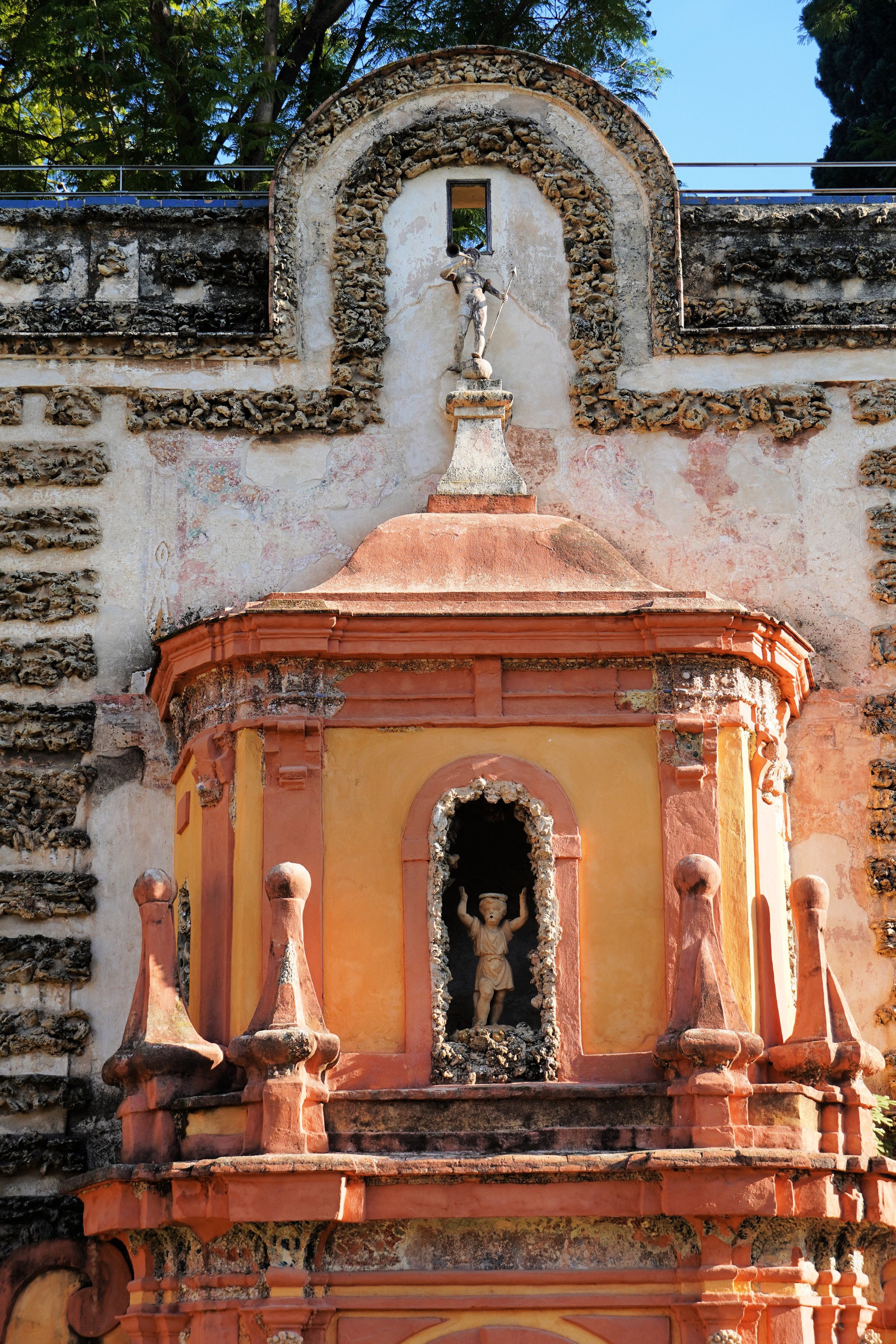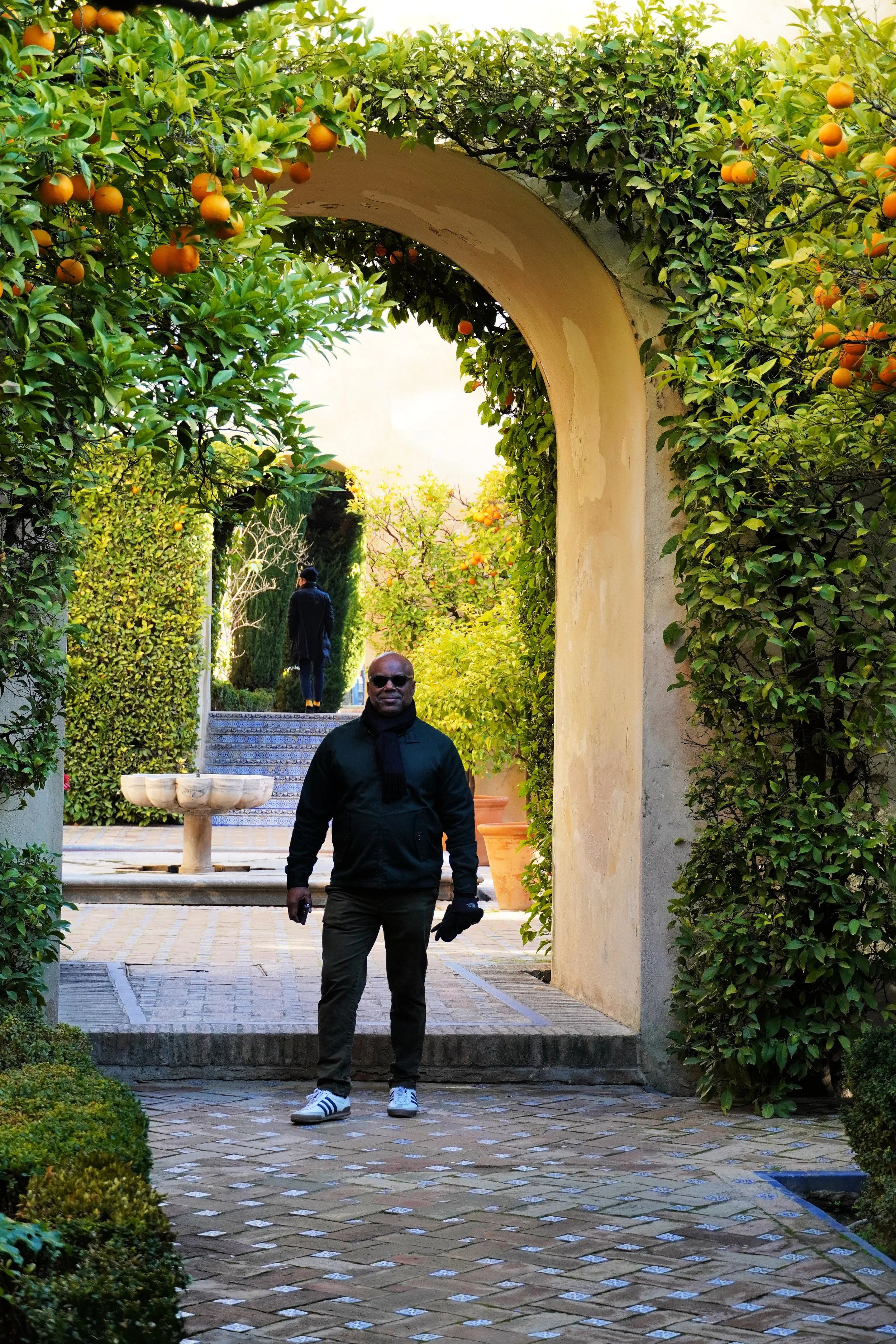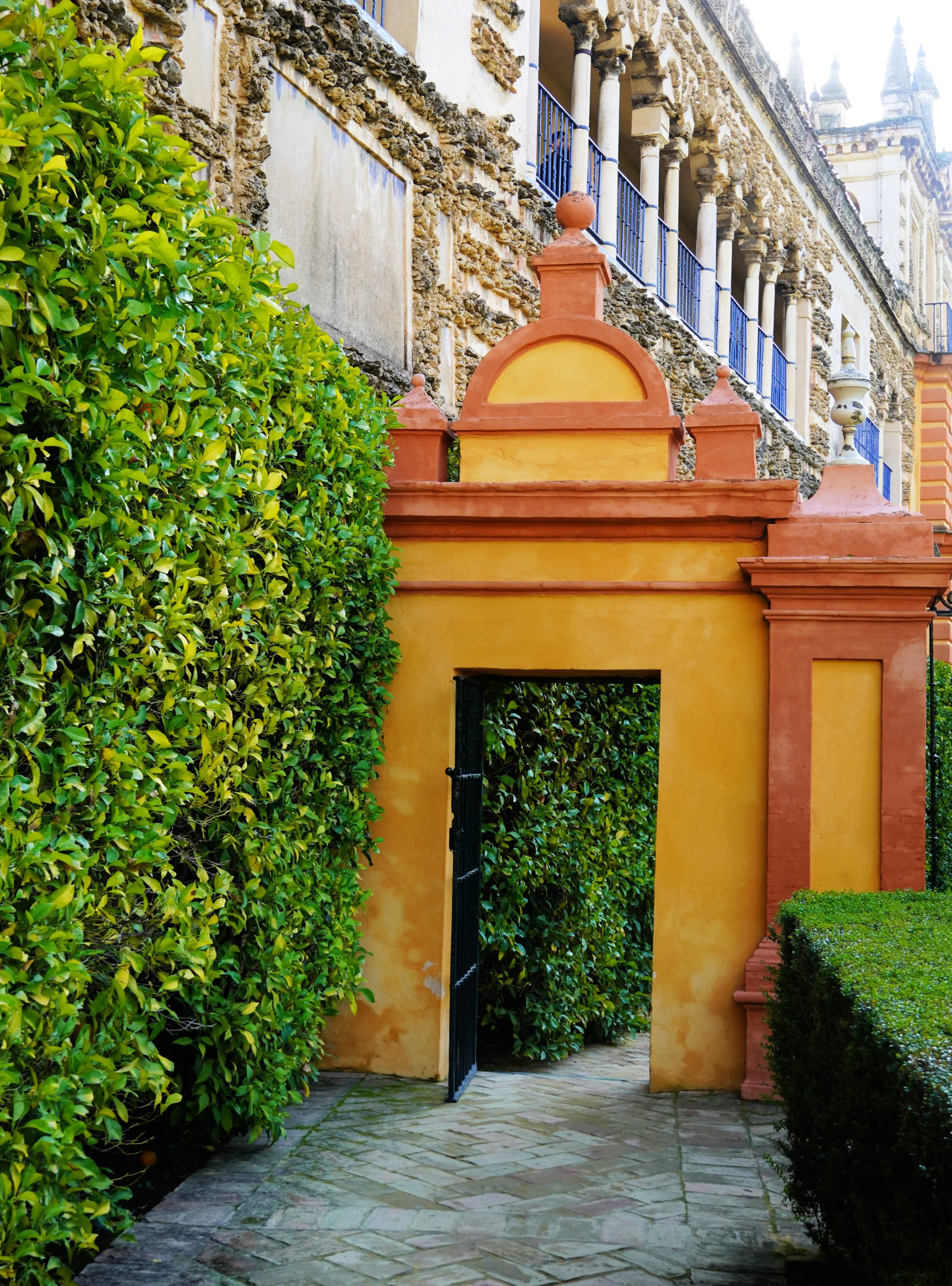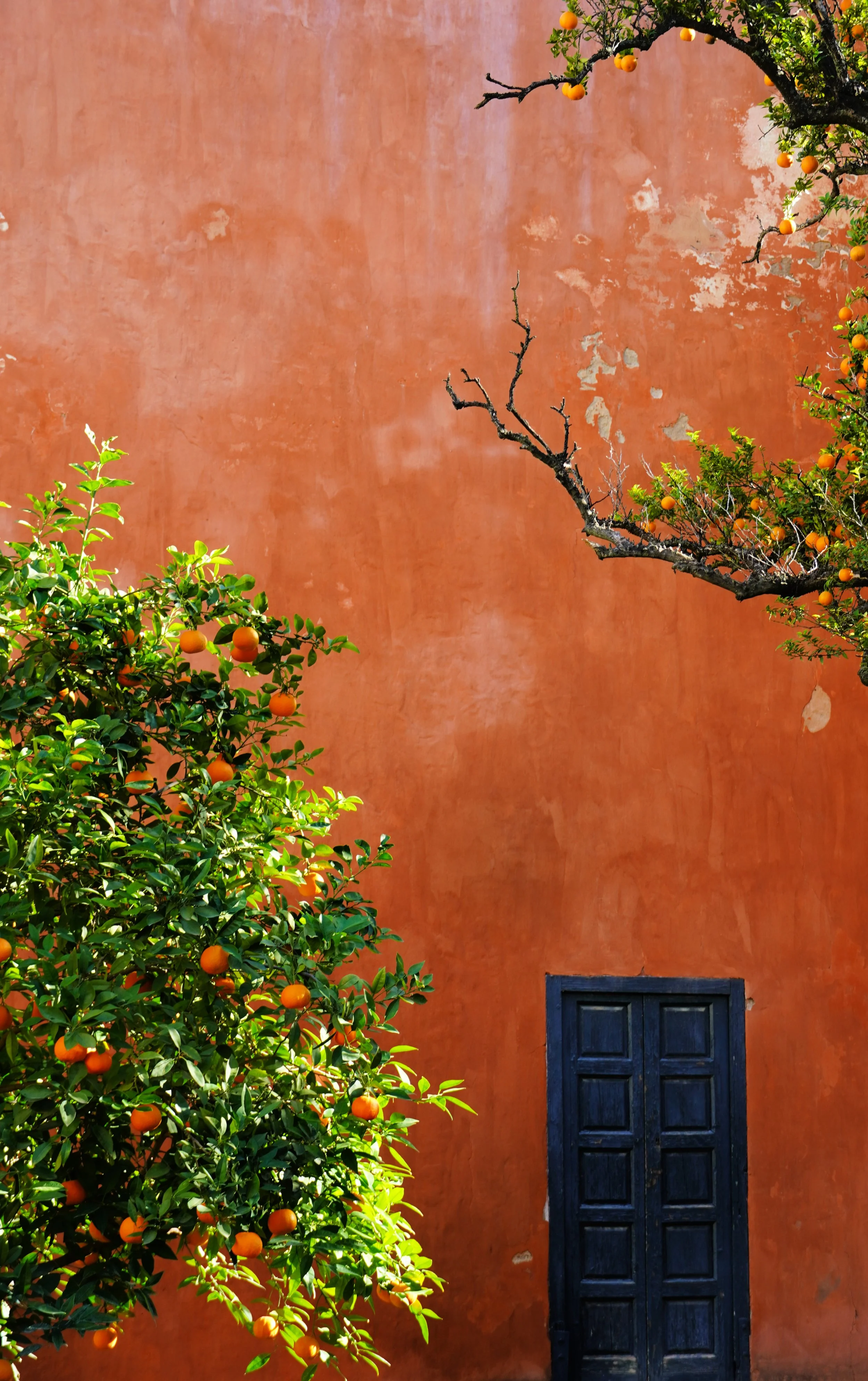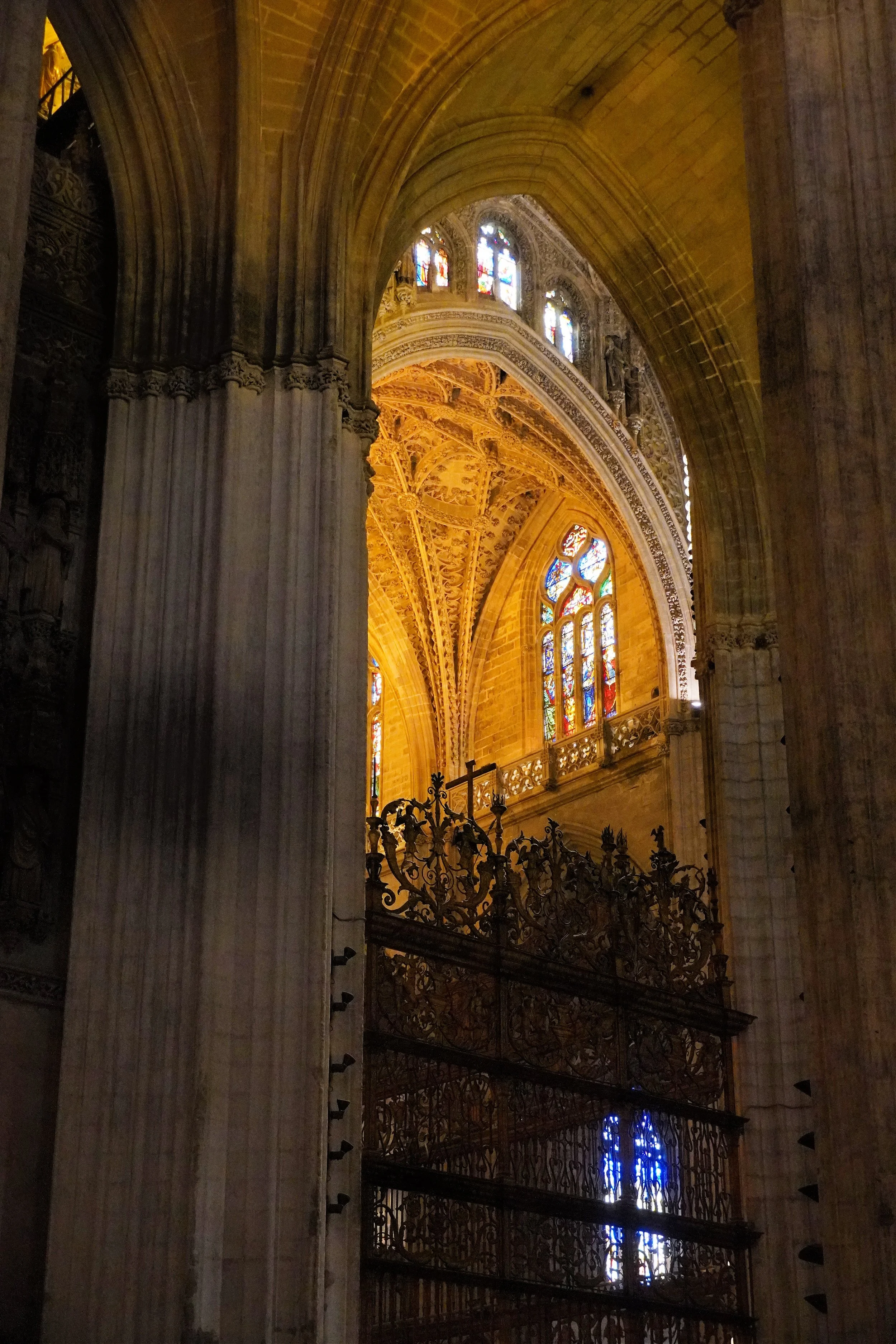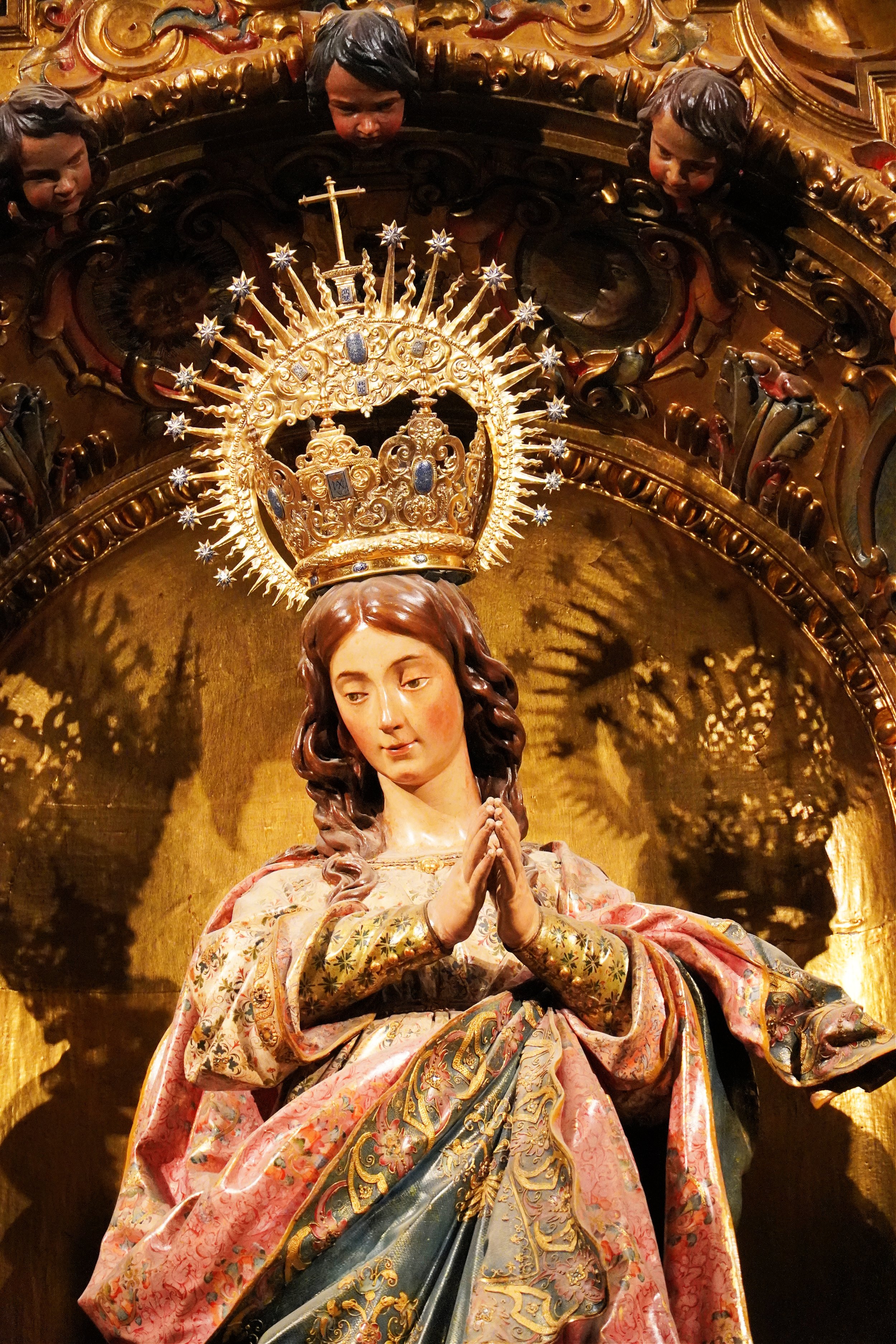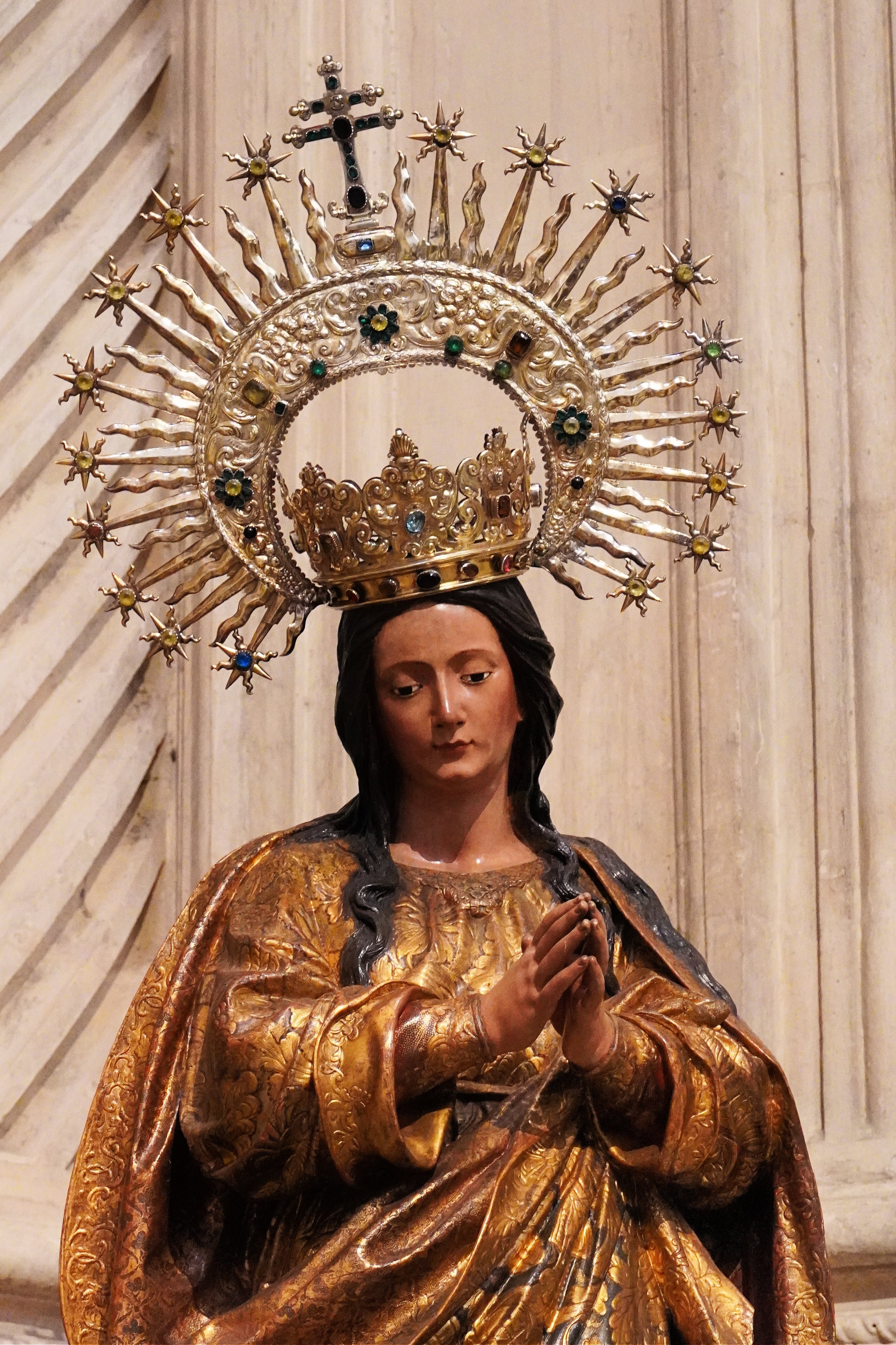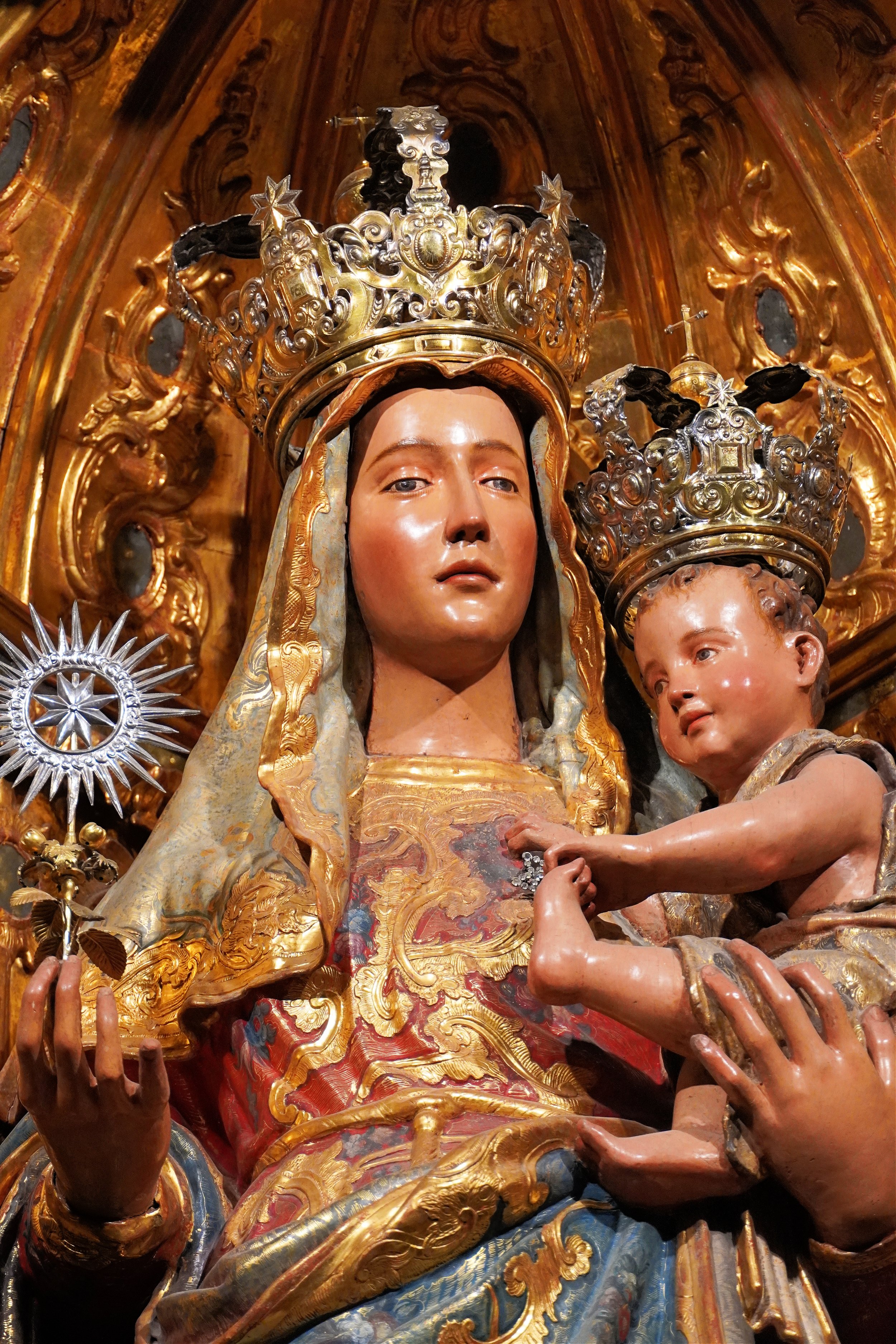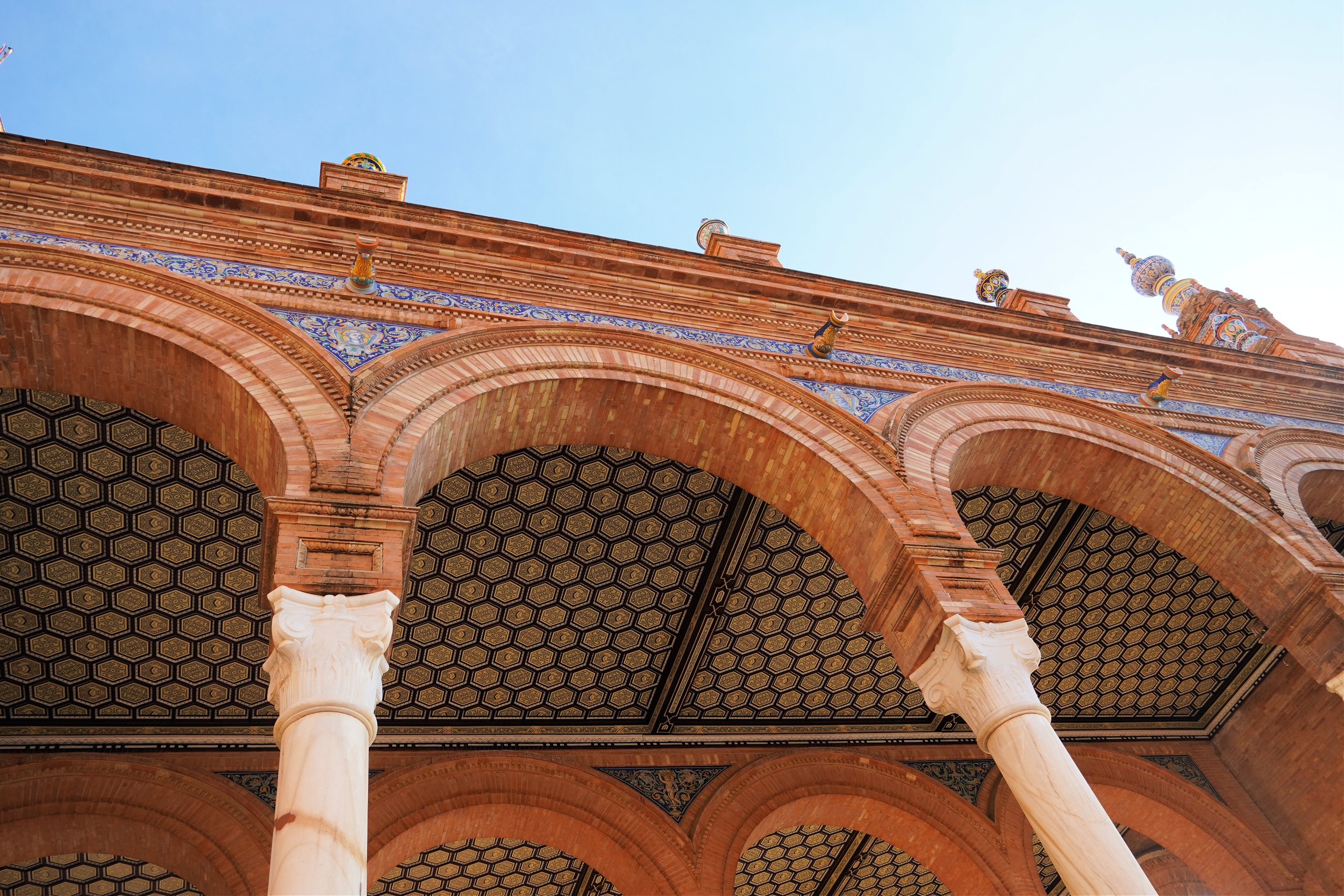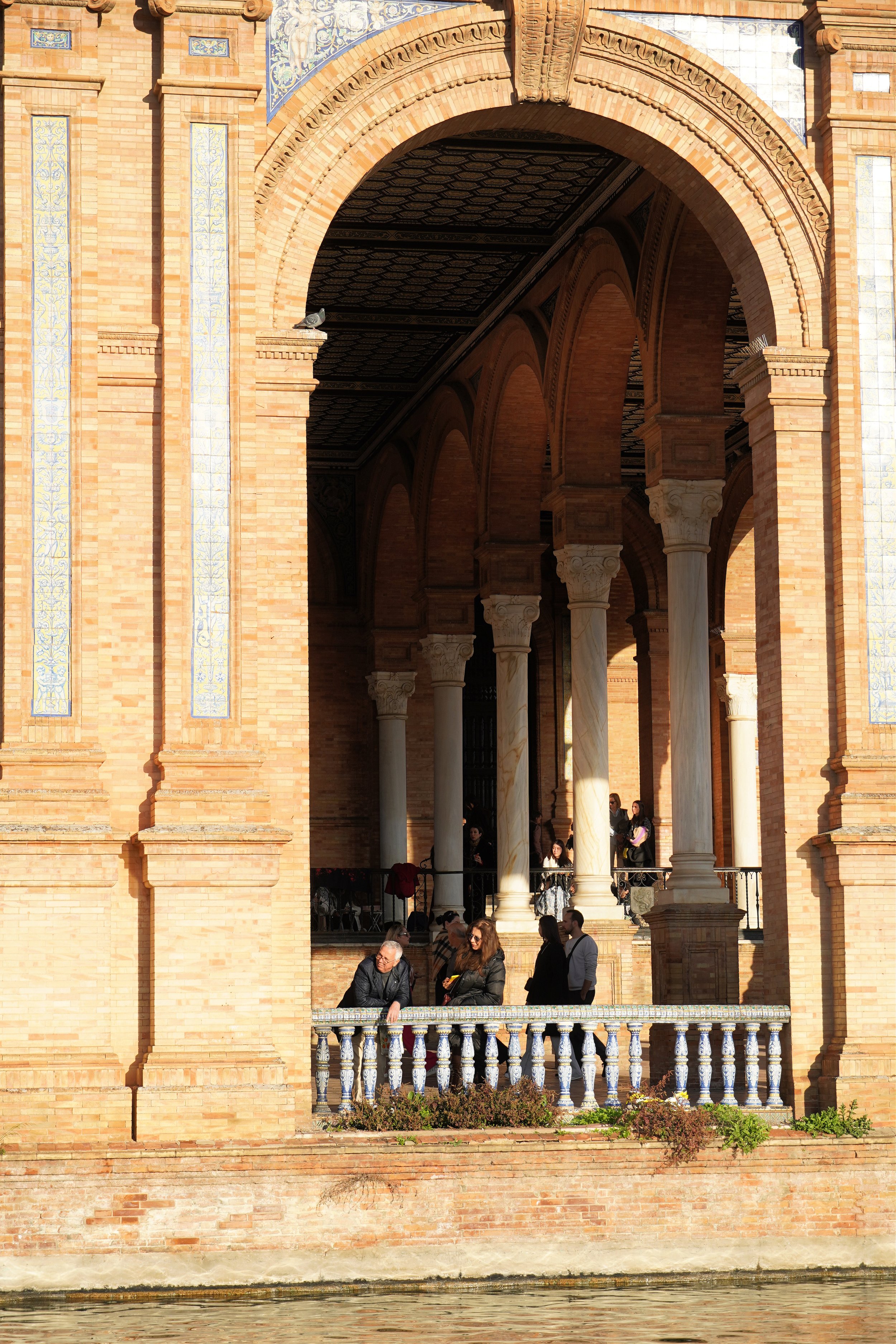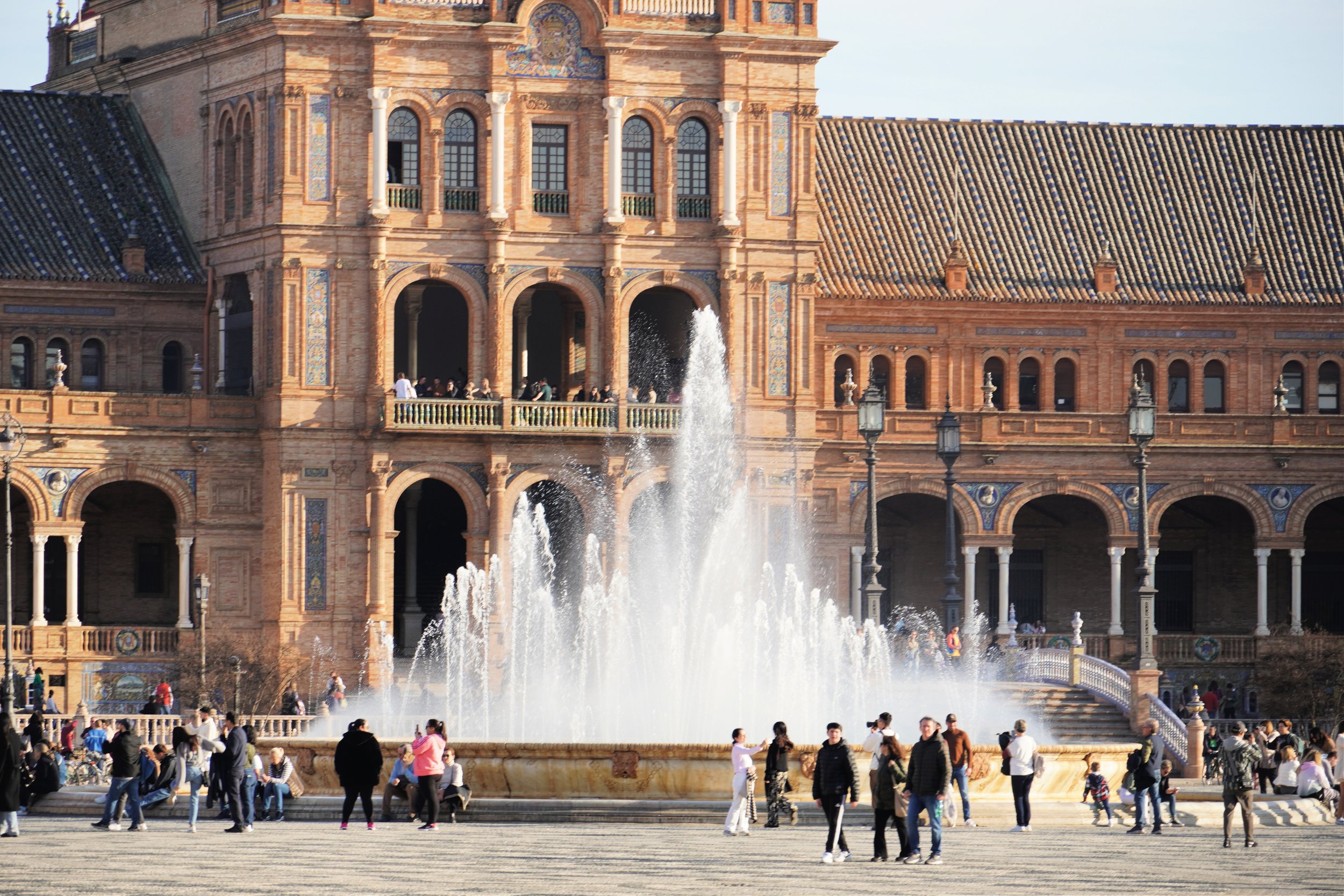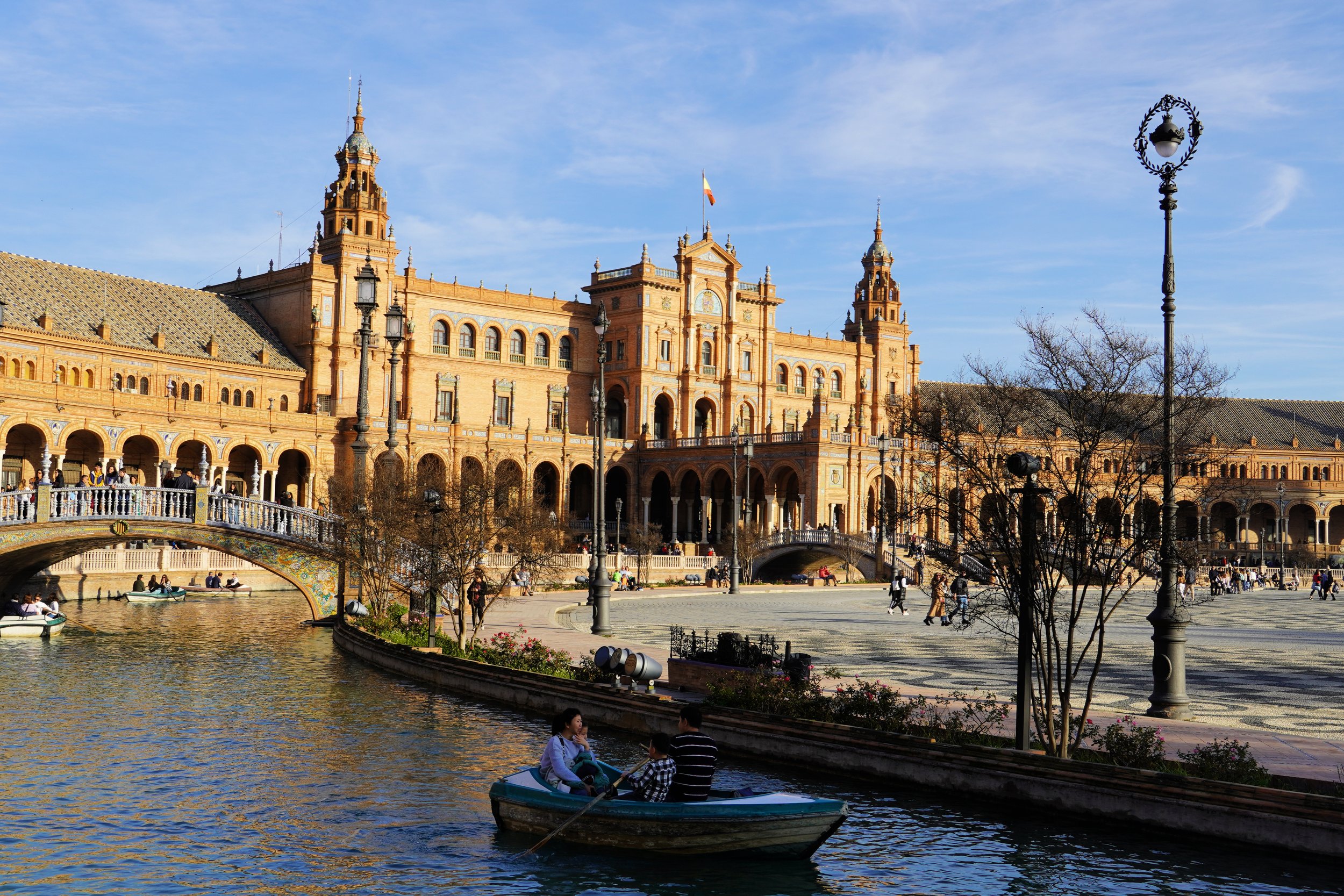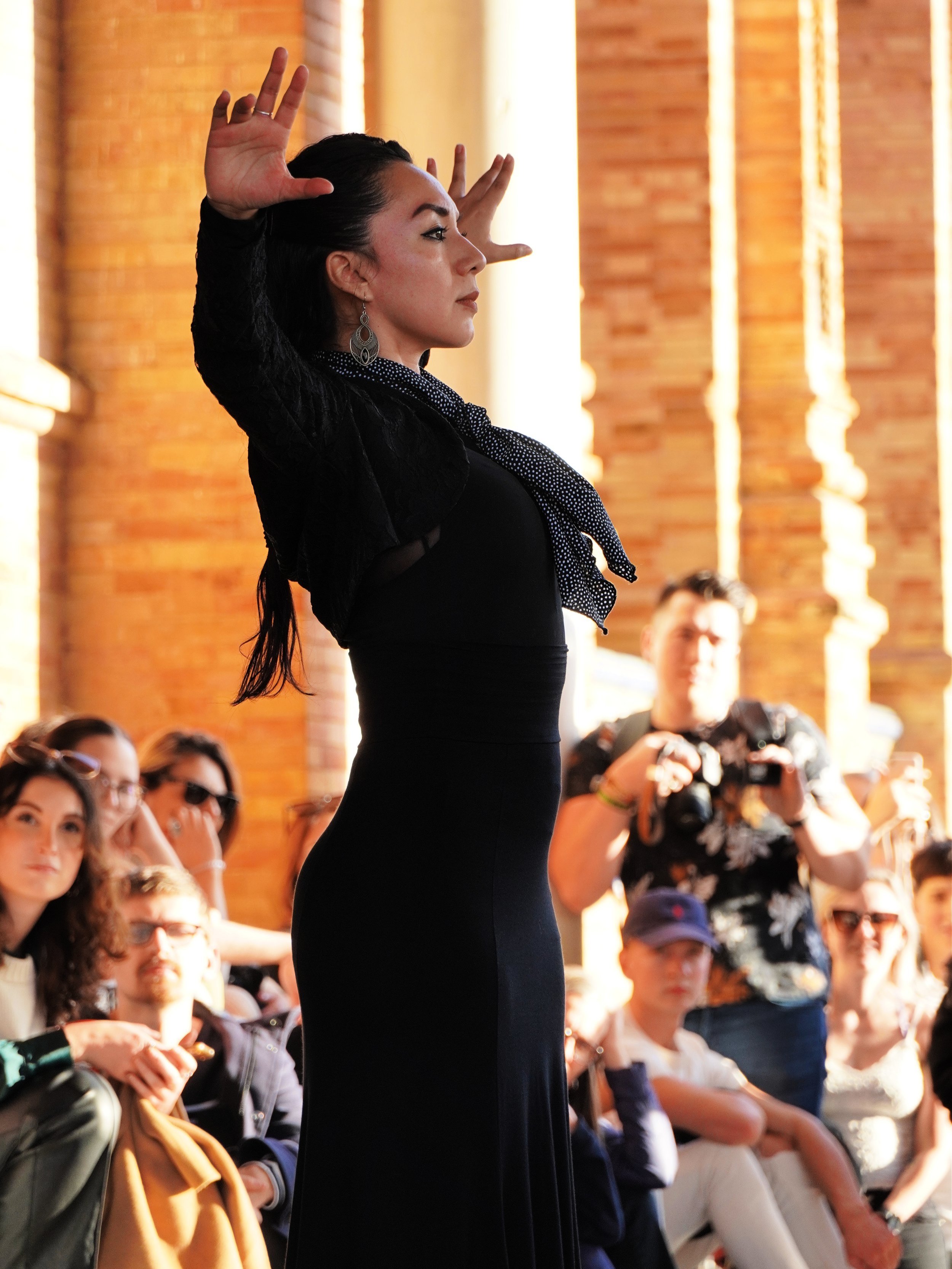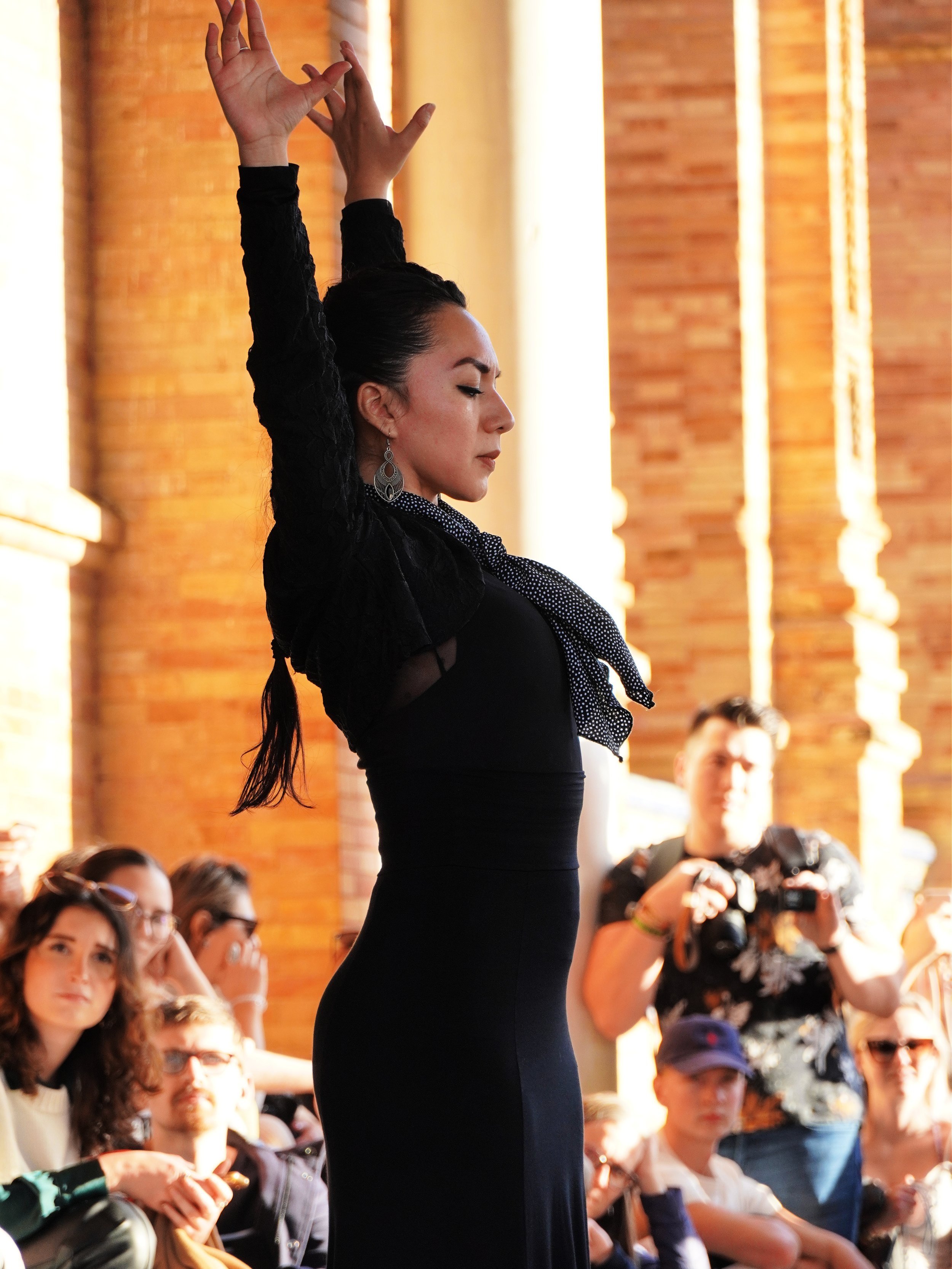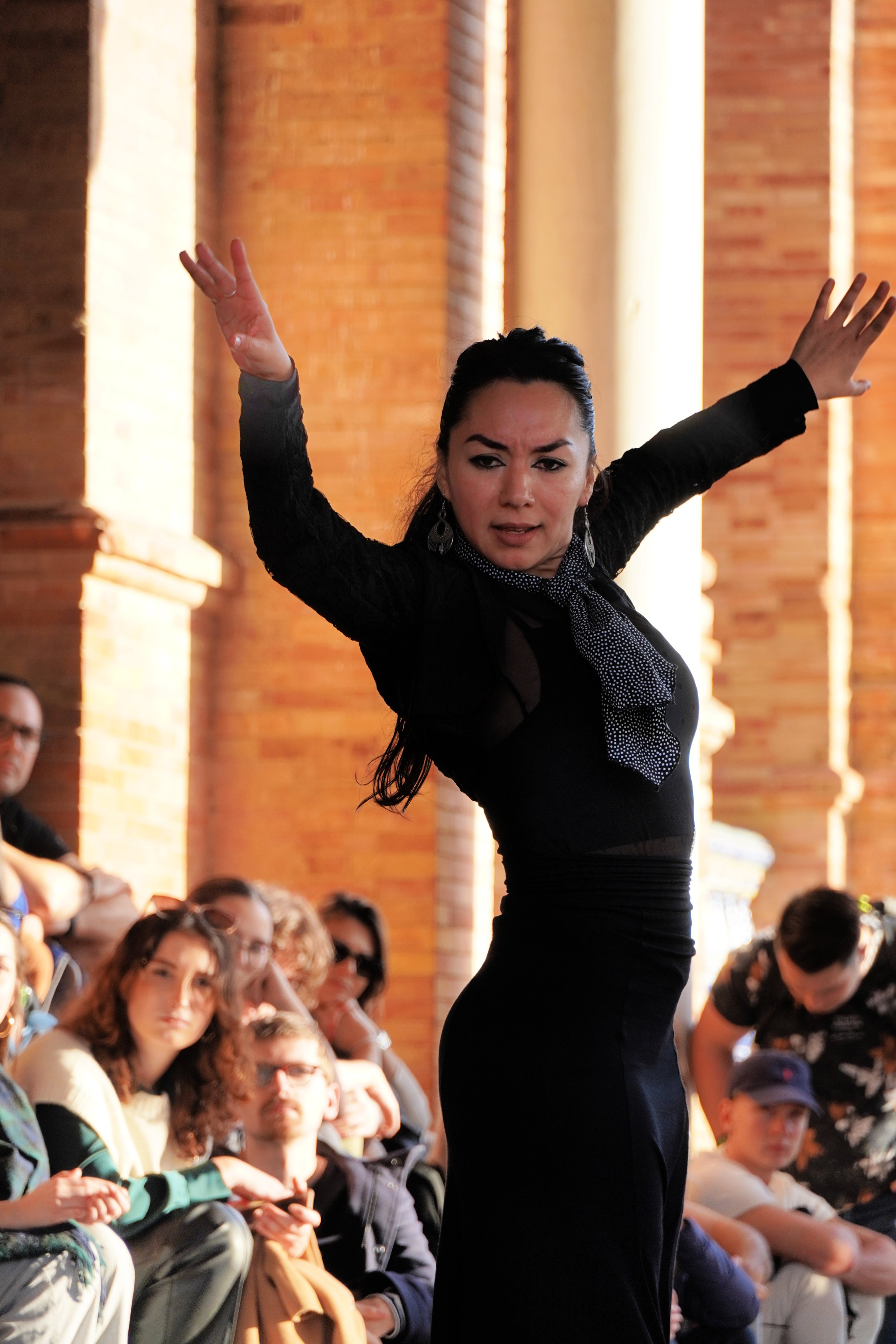48 Hours in Spain's Vibrant City: Sevilla!

Located in the heart of Andalusia, Sevilla is a city with vibrant energy, rich history, and captivating culture. With its narrow maze of streets, historic landmarks, and passionate flamenco performances, spending 48 hours in Sevilla promises an unforgettable experience….. In my case, this beautiful city completely captured my heart.
I loved looking up at the various church steeples that peek out above the rooftops.
Day 1 - Barrio de Santa Cruz - Casa de Pilatos - Las Setas
With an early arrival in Sevilla, we quickly dropped our luggage off at our accommodations conveniently located in Old Town. We couldn’t have asked for a better location as our three bedroom apartment in Murillo Plaza was directly across the street from the Alcazar Gardens.
We made our way through the Barrio de Santa Cruz - a maze of narrow cobbled streets and brightly painted homes and orange trees seem to be around very corner. I can only imagine how the scent of orange blossoms will linger in the air in a few weeks! These narrow streets, locally known as "callejones," showcase traditional Andalusian architecture with whitewashed buildings adorned with colorful tiles and wrought-iron balconies. The alleys often open up to hidden squares (plazas) where locals gather, and visitors can enjoy the lively atmosphere of cafes, tapas bars, and shops. If you’re lucky you’ll be able to peer into the courtyards that grace these homes — they serve as tranquil sanctuaries away from the bustling streets that lie outside the doors.
With only 48 hours, we knew we needed to use our time wisely — we made a beeline for our first destination, Casa de Pilatos. Casa de Pilatos, built in the 16th Century, is a fusion of architectural styles. The exterior boasts a Mudejar courtyard, reflecting Islamic influences, while the interior features intricate Gothic and Renaissance elements.
Moriah preparing to enter Casa de Pilatos.
The Casa de Pilatos is renowned for its exquisite architectural details, including intricate plasterwork, carved wooden ceilings, colorful ceramic tiles (azulejos), and stunning marble columns. These features reflect the wealth and sophistication of the Renaissance period in Spain.
I was in awe of the stunning azulejo-tiled walls and elaborate carvings that adorn the rooms and patios.
The gardens at Casa de Pilatos are equally impressive. They are designed in the Renaissance style, featuring meticulously manicured lawns, vibrant flower beds, elegant fountains, and tranquil pathways lined with citrus trees and lush greenery.
From Casa de Pilatos we walked to the more modern architecture of Las Setas - located in the central Plaza de la Encarnación. Setas is the Spanish word for Mushrooms - very fitting because this structure consists of six large mushroom-shaped parasols, whose design is inspired by the vaults of the cathedral of Seville and the ficus trees of the nearby Plaza del Cristo de Burgos.
The panoramic views atop the Setas are amazing. The sweeping vistas encompass the city's historic center, where cobblestone streets below wind their way past ornate cathedrals, majestic palaces, and bustling plazas. In the distance, the silhouette of La Giralda dominates the skyline.
After a brief nap and a bite to eat, we returned to the Setas once again to see the spectacular evening light display that comes with the purchase of your ticket. A memorable way to end our first day in Sevilla.
The Setas put on a magical light show as evening sets.
Day 2 - Royal Alcazar - Sevilla Cathedral - Plaza España
We started Day 2 of with a sunrise walk through the maze of streets that surround the Royal Alcazar. I love sunrise walks — they’re a great way to explore destinations; Our footsteps echoing on the cobblestones, a shop owner sweeping the front of her business as a neighbor bid her “buenos dias”, and the golden glint of sunlight reflecting on the city walls as the sun made its way into the sky. Breakfast was in order to fuel our day and then off to our first sight of the day - The Royal Alcazar.
Cobblestone alley behind the walls of the Royal Alcazar Gardens.
The Royal Alcazar's roots go back to the 10th century. It was initially built as a fortress for the city's governors. Over the centuries, it evolved into a stunning palace complex, blending Moorish, Gothic, Renaissance, and Baroque architectural styles—all reflections of the diverse cultural influences that have shaped Spain's history. Fun fact: The Royal Alcazar is the oldest active royal palace in Europe.
Entrance to the Royal Alcazar.
While the corridors of the Alcazar are stunning, the highlight of this palace (for me) was visiting the gardens - really, a collection of many gardens! I loved discovering each of the gardens in their various styles and with a medley of colors and textures. We spent a good hour and a half in the gardens - and if time allowed, we could have stayed longer.
This rustic wall in bright terracotta bid me “adios” as I left the grounds of the beautiful Alcazar.
From the Royal Alcazar, we crossed Plaza Triunfo to Sevilla Cathedral — as we admired the horse drawn carriages along the way. Tip: You might consider pairing your Royal Alcazar tickets and Sevilla Cathedral on the same day (one in the morning and other in afternoon) as they are conveniently in close proximity to each other.
Sevilla Cathedra stands on the site of what was once a grand mosque during the Islamic rule of Spain. When the Christians reconquered the city in the 13th century, they converted the mosque into a cathedral, incorporating some of the original Islamic architecture into the new structure. This cathedral as well as the Royal Alcazar, is a UNESCO World Heritage Site. The cathedral contains an altarpiece known as the "Retablo Mayor," which is the largest altarpiece in the world. It consists of 45 carved scenes from the life of Christ, intricately detailed and adorned with gold leaf.
Light glowing from the Retablo Mayor.
Among the treasures of the cathedral you’ll also find many images of the Virgin Mary.
Before we left we climbed the 51 steps of the Giralda - the cathedrals bell tower and one of the most famous monuments of Moorish architecture in Spain. It is also a great place to take in the views of Sevilla. Tip: We found the Giralda to be very crowded so, you might consider visiting the Cathedral and the Giralda first thing in the morning and then visit the Alcazar in the afternoon. A discounted ticket that encompasses the Alcazar, The Cathedral and The Giralda can be purchased as a package - and will be your best bang for the buck.
We grabbed an afternoon snack as we walked to Plaza España — we figured it would be a good place to rest a bit and contemplate our options for dinner. The walk from Sevilla Cathedral to Plaza España is about 20 minutes or another option is to hire one of the horse carriages — we saw plenty of couples and families choosing this option. The carriage ride will set you back about 45 euros.
Plaza España was designed by architect Aníbal González for the Ibero-American Exposition of 1929. Despite its popularity as a tourist destination, the Plaza de España offers moments of tranquility and serenity….. it’s easy to escape to your own personal walk along the arched perimeter of the plaza. Whether you’re admiring the intricate details of the ceramic tile work or simply enjoying the gentle breeze from the canal, the plaza provides a peaceful escape from the hustle and bustle of city life. On the afternoon we visited, there were lots of people there but, it never felt crowded!
The most memorable part of visiting Plaza España was watching the Flamenco dancers. As we wandered through the plaza, admiring the beauty of its design, we were suddenly drawn to the rhythmic sounds of clapping and guitar strings resonating in the air.
Curious, we followed the music and found ourselves at the edge of the plaza, where a small crowd had gathered around a group of flamenco dancers. Bathed in the golden light of the afternoon sun, their movements were as captivating as they were mesmerizing.
I could feel the passion in this dancer’s facial expression as the acoustic guitar played with her tapping feet.
Watching free flamenco dancers in Seville's Plaza de España was an unforgettable experience and the perfect ending to our 48 hours in Sevilla.
Spending 48 hours in Sevilla offered us a journey through centuries of history, culture, and vibrant Andalusian life. From the enchanting narrow streets and alleys of Barrio Santa Cruz to the majestic landmarks like the Cathedral and the Alcazar, every moment was a new discovery.
Colorful church top peeking above the alleys of Barrio Santa Cruz. You’ll find this piece along with a collection of our other prints in our shop.
We savored traditional tapas, immersed ourselves in the passionate rhythms of flamenco, walked the grounds of historical sites and got lost in the charm of the city's winding streets. Sevilla has left an indelible impression on my heart. With its timeless beauty, Sevilla beckons travelers to return —- which what I hope to do very soon.


